
by Grryo Community | Apr 13, 2017 | Stories, You Are Grryo
They plunge to the bottom of the frozen sea, holding their breath, blinded by the murky abyss, searching not only for pearls, octopi or abalone, but also for freedom.
What would happen if their line were to break? Would the men comfortably sitting above in their boats, gleefully singing songs, try to save them? It doesn’t matter. The Japanese Ama defy the ridged confines of gender expectations because they are driven by a unified sense of purpose – to live free.
For the Ama or “women of the sea”, their faith is not in men but in nature. After all, the sea itself is an intoxicating female entity. Its creatures are the Ama’s allies. Their destinies are woven together like a fluid tapestry.
As the divers rise back to the surface and slowly exhale, the bay rings with the whistling echoes of their gentle gasp, and with it, reverberations of strength, autonomy, courage, stamina, and beauty.


The Ama are one of the most interesting elements of Japanese society. They are the female divers who, since about the year 750, have been diving for pearls, abalone, octopi, and lobsters, as well as harvesting seaweed along the coastline of Japan.


There are many fables of the Ama, including the story of Princess Tamatori, depicted in a Japanese block print from 1814 titled The Dream of the Fisherman’s Wife, by Hokusai. It is an example of Japanese erotic art called Shunga, popularized during the Edo Period. The divers were often represented as erotic, simply because in Japanese culture the sea is seen as a female entity.


It is believed that the print depicts the story of Princess Tamatori, a figure highly popularized during the Edo period. The princess was a modest shell diver or Ama, who was searching for a pearl stolen from her husband’s family, the Fujiwara Clan, by Ryujin, the dragon god of the sea. Vowing to find the jewel Tamatori dives down to Ryujin’s underwater palace and is pursued by the god and his army of sea creatures, including octopi. When she finds the pearl, she cuts open her own breast and places the jewel inside; allowing her to swim faster in her escape. After reaching the surface the wound proves fatal, and in her death she is forever viewed a heroine.

The Ama were and still are, women who sought independence and community. There are many Ama who continue to dive passed the age of 90. It is one of the few professions dominated by woman and where there were no restrictions on their freedom.

Men would occasionally dive, but it was thought a better job for women, as it was believed that women had an additional layer of fat to keep them warm in the frigid waters. The original Ama would dive nude wearing just a loincloth and a protective scarf on their head. Streamlining their bodies in this way allowed them to swim faster and it was easier to warm up without wet clothing clinging to their skin.

An experienced Ama diver could dive as deep as 30 meters and hold her breath for up to two minutes at a time. These courageous women would dive from rocks, the shoreline and boats, with rope strung around their waists, and men would wait in the boats above to pull them back to the surface.


The whistling noise that they emit when resurfacing is called “Isobue”, or “ocean whistle,” which helps regulate their breathing. At one time, their whistling echoes would fill the bays of Japan. The entire free-diving process allows Ama to develop an extremely large lung capacity — a characteristic that many then pass on to their children.

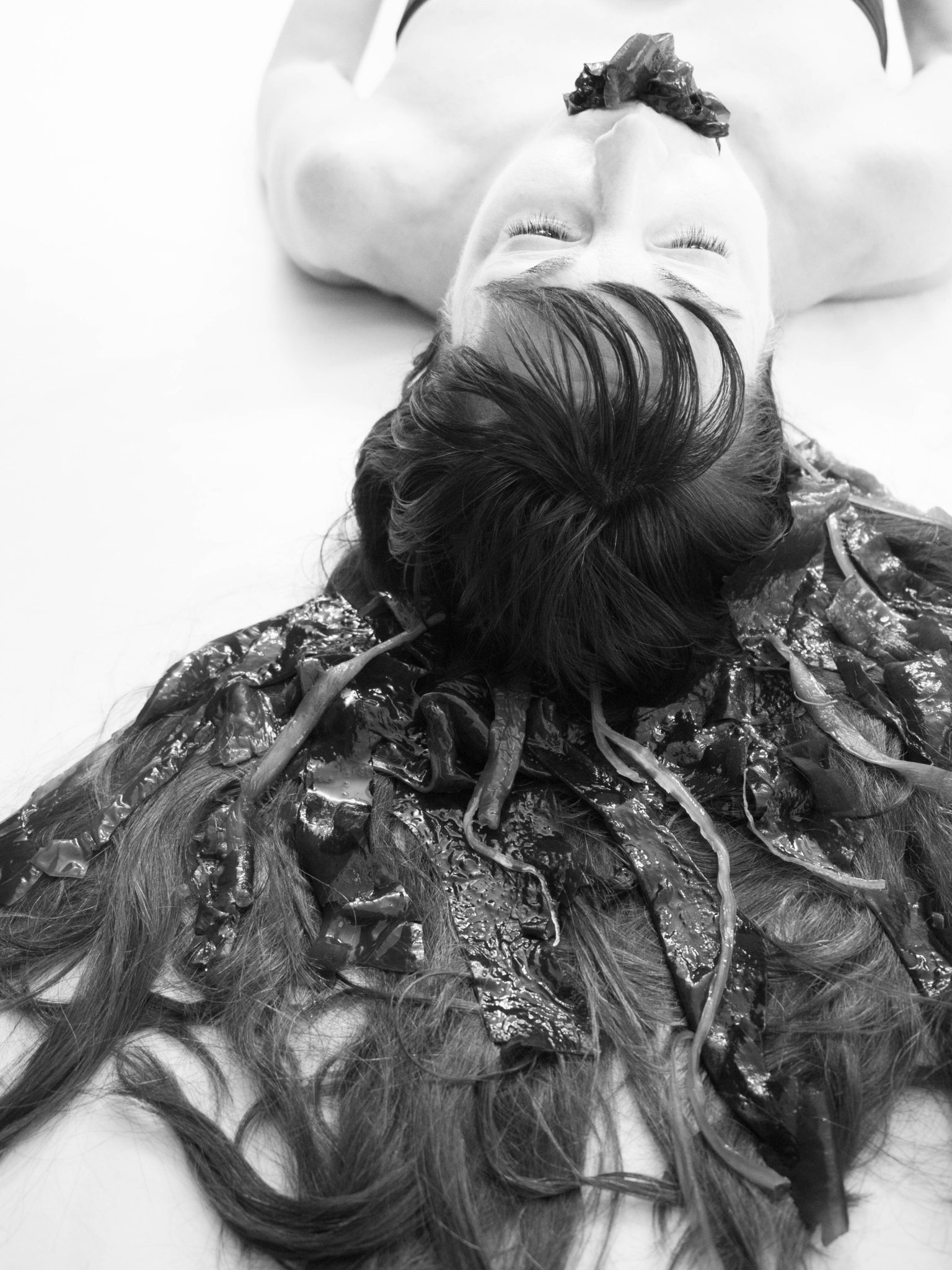
In the 11th Century a noblewomen, Sei Shonagon, wrote The Pillow Book, a collection of her observations. She had encountered the Ama during her travels: “ One wonders what would happen to them if the cord round their waist was to break.” She goes on, “the men sit comfortably in their boats, heartily singing songs…they do not show the slightest concern about the risks the woman is taking”.

Even though socially the Ama’s labor was certainly less valued than that of men, they were unique among the female population. During a time when women were considered the subjects of men, a woman that could earn her own living, and also dictate the migration of her entire family, was unequivocally liberated. Their positions in society existed on almost a surreal plain.
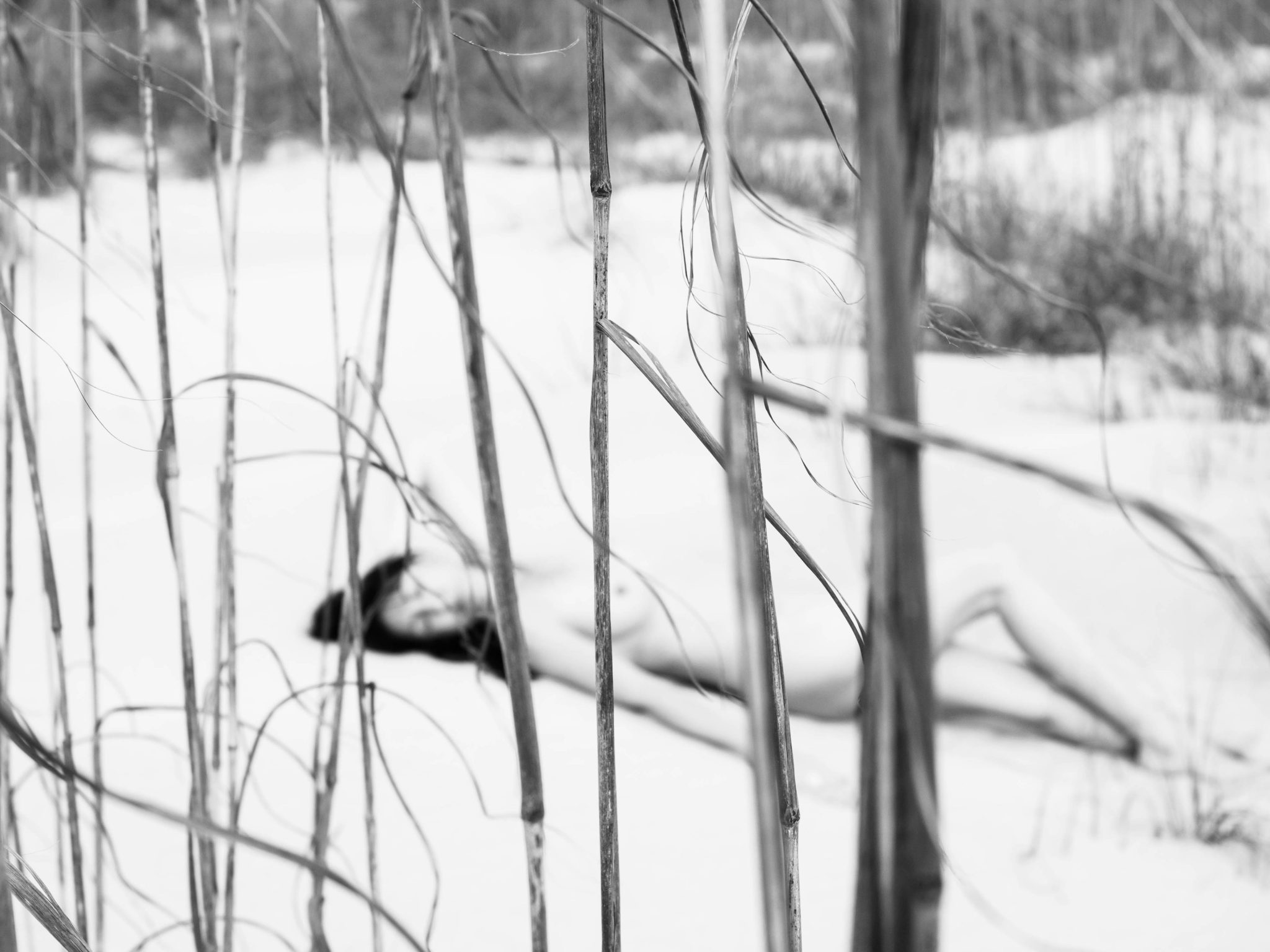
The Ama are inspirational to me, as an artist and a woman, for many reasons, but foremost because what they did was just what they had to do, regardless of risk or reward. Even more remarkable to me is how they did it; breaking traditional rules within the confines of an existing system and still preserving their individual authenticity along with the connection to their culture.

My series, Whistling Echoes, explores the mythology of these women. Through the use of metaphor and symbolism, my visual interpretation explores the relationship that these women had to the sea and it’s creatures and how it not only shaped their destiny but also allowed them to live free.

Donna Garcia is a Fine Art Photographer from the United States.
To see more work and get more information on the artist please have a look at her Website or Instagram.

by Grryo Community | Mar 28, 2017 | Stories, Storyteller
Changing Beauty – The Changing Face of Beauty

© Caroline de Bertodano
For centuries beauty was represented by natural beauties. Salome, Guinevere and Nefertiti to name but a few. Later beauty was portrayed in artworks such as Botticelli’s Spring, Rossetti’s Other Woman, da Vinci’s Mona Lisa and many Impressionist works. All evocative of something more than appearance. The Greek male nude sculptures and the female nude deities of Eastern Ishtar to the later Western art such as Donatello’s “David”, Titian’s “Venus of Urbino”, celebrated the natural human body. All to stir the mind as well as the sensual passions. Very recent depictions of beauty in art are dormant and beg the question as to why? A backlash to society’s ‘meat market’ and physical fabrications?

© Caroline de Bertodano
Through the ages, the size and shape of beauty have come and gone but natural was ever present. Different body types and features went in and out of fashion aided by the armoury of clothes and makeup but ‘natural’ was the foundation. People simply got on and appreciated more what they had been born with. In recent times, celebrity has replaced almost everything and as the avarice consumers we have become, we follow like sheep.

© Caroline de Bertodano
The reality of beauty, either male or female, is that almost every person is not happy in their own skin and has a list of what they feel disdain for about themselves, if not pure self-loathing by many women. An agenda of what they would change if they had the money. Massively increased depression & eating disorder numbers have the psychiatrists rewriting the psychology books. If we add ageing to the equation, what was ’50 is the new 30’ and now ’50 is the new 70′ based on looks alone. Media role models advocate nothing but shallow appearance, they negate the actual being, of being human, born natural and undoubtedly will die as bare to living as death intends. Time will always transcend the superficial.
Every age has issues of imperfection but never before to such extremes and even the 20 somethings have joined the mass hysteria in the quest for perfection and elusive eternal youth, where beauty is considered to reside. Exaggerated ideas of imperfection and the ‘fixing myself’ phrase is often heard. With the explosion of social media and its consequential hunting grounds, the idea of perfection is now so media influenced by pretense, false impressions of image, persona and of course the eternal super skinny body form…. no surprise there! Many men are taken in by these falsehoods. But in this age of ’swipe right’, they just move on to the next idea on their perfection list, wondering why they cannot find true and lasting love. Women have become competitive instead of supportive, putting good images of themselves to annoy other women or for attention that they lack in reality.

© Caroline de Bertodano
“I’d like to say that I would be happier in my natural skin but given the opportunity, I would enhance myself. It would seem silly not to. When we live in a world where celebrities and superstars are always looking amazing and we are exposed to the ideal woman and figure all the time, why wouldn’t you want to keep up? There seems to be a much higher standard of beauty… not a natural beauty but a beauty that can be made through cosmetic surgery. You only need to look at the ‘IT’ girls of now and look at a ‘before and after photo’ to realise they are doing it. It eventually just comes down to money. Money can buy physical beauty essentially and if I had the money I would be lying if I said I wouldn’t make changes to myself. Every girl has something they hate about themselves or feels self-conscious about and if it somewhat bothers you, of course, you are going to want to change that. It is not like there are any female role models advocating natural of ‘inner’ beauty but quite the opposite really; young girls are bombarded and almost brainwashed by social media about what is a normal young girl should or does actually look like”
Eva 21 years.

© Caroline de Bertodano
There is a chasm of difference between plastic and cosmetic surgery.
Plastic surgery is ‘reconstructive’ for medical reasons and includes, burns, limb loss, birth defects, trauma and disease and is vital, both externally & internally life-saving.
Cosmetic surgery is elective, ‘a choice’ by an individual to enhance appearance only.

© Caroline de Bertodano
With endless procedures, media & social influence, the idea of beauty means many are starting to look alike. Some so alien from their original self they become modern day monsters as procedures ‘fall’ and they lack the money to redo them. Expressiveness and uniqueness are being lost. The expressiveness of a child’s face in laughter, the look of love, is the beauty & emotion within that is expressed externally.

© Caroline de Bertodano
However, in some adults, they can no longer show emotion on over engineered faces, which in turn affects the emotional communication in relationships. First impressions aside, if we are all impressed by certain looks alone, the character, mind and soul; the internal self, go unconsidered and disappointment and failed relationships surely follow. Is Audrey Hepburn, one of the iconic beauty’s of our time, now ‘imperfect’? Her beauty came from what was inside as well as outside and many talk of her internal light.

© Caroline de Bertodano
The greatest beauty is the true natural beauty requiring three vital ingredients. Looks, mind and soul. Ever fallen in love with someone you least expected to and been surprised because they are not your ‘normal type’ but because of ‘who’ they are, not just what they looked like? Imperfections pale into insignificance on realizing emotional depth, mindful heights and the confidence they generate. True beauty is the combination and what artists for centuries before us tried to depict.

© Caroline de Bertodano
I would rather see the truth in someone’s eyes and the micro expressions that connect to the soul’s windows than an empty one-dimensional being that simply ‘looks good’. Beauty will always change but not at its core. My Mother used to say, ‘feed the brain and soul as well as the body’ and true beauty is those three things that make up the internal natural light, ‘the natural beauty’ and the only thing that will sustain relationships and transcend the chattels of time.

© Caroline de Bertodano

© Caroline de Bertodano
© Caroline de Bertodano 2017

by Kat Meininger | Mar 22, 2017 | Kat Meininger, Stories, Storyteller, You Are Grryo
I Am My Mother’s Daughter: My Journey in Photography

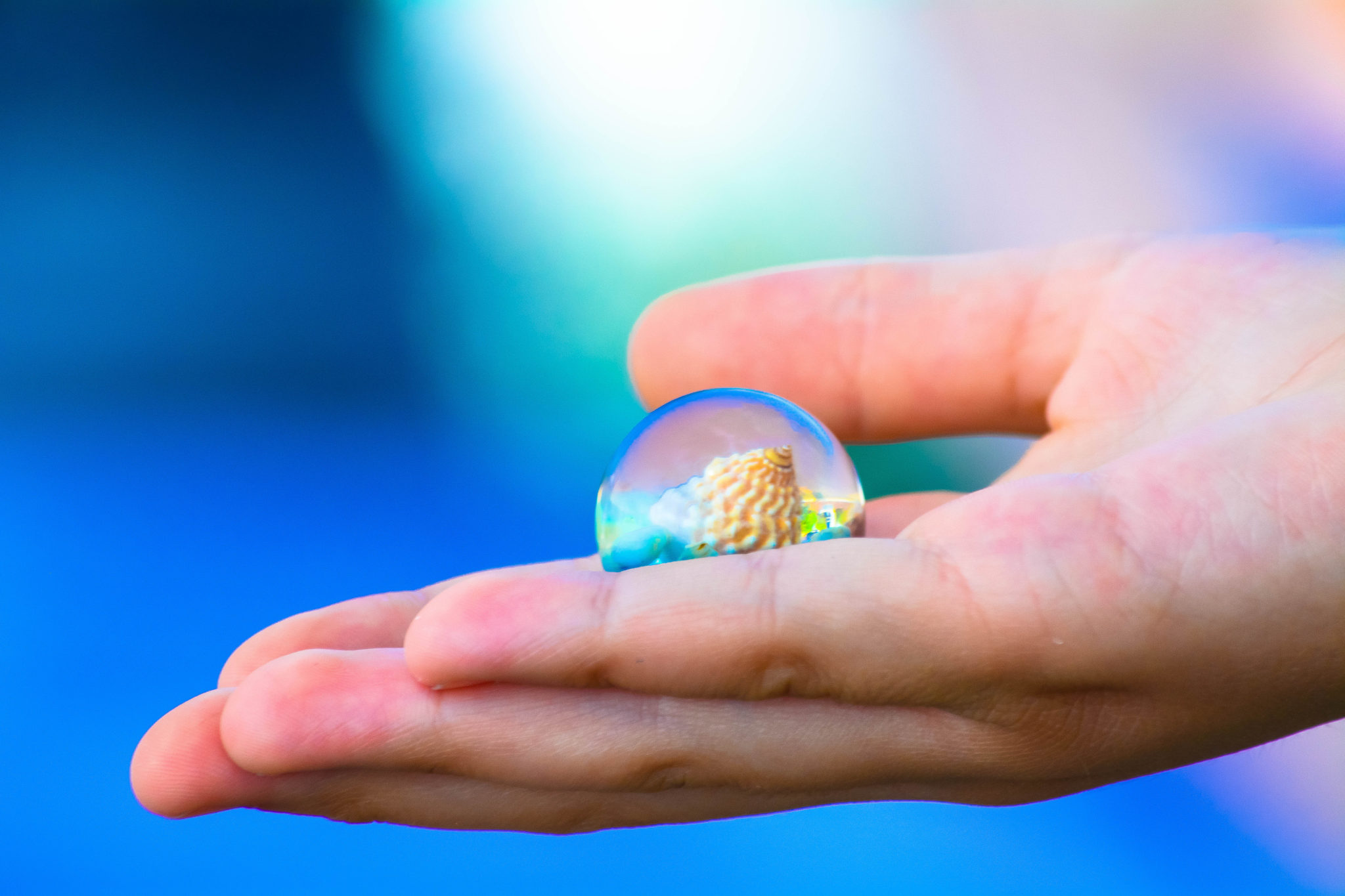
My love affair with photography began with my mother. It was not love at first sight. My mother was always taking pictures. Always. Her camera held permanent residence in her handbag, and our lives were put on instant play-pause whenever she was inspired to take a shot, which was often. As a young child, I never thought about this as her passion, but only as an assigned pose to be endured for as long as it took for her to rummage through her purse to find the camera, get the camera out of its case and then get the shot she was looking for. Full disclosure: I was not in the least bit cooperative. However, I was eventually pulled in by all the photos she took, and I began, not only to appreciate them, but to look at them with a more critical eye. I never offered outright (what I thought of as) constructive criticism of my mother’s photos (an action that would have resulted in any number of unpleasant outcomes…. as a very good-looking and somewhat spoiled woman, my mother was more than a bit vain in all areas of her life).
In my mind, I might have been thinking, she should have turned us more towards the light, or away from the light or taken a few steps forward or backward. My interest was piqued, and for my 8th birthday, my mother bought me a Brownie camera of my own.


Of course, at first, I began shooting any subject that was close at hand: including my hand, my dolls, my clothes, my record player, my dresser, my closet door, dust bunnies under my bed, whatever struck my young fancy. In those pre-digital days, I was allowed two rolls of film and one pack of flash bulbs per month, as the film, flash bulbs, developing and printing all had to be paid for out of pocket. I quickly learned to become more selective in my photographic endeavors as not to waste those important resources on frivolous subjects. Time passed, my cameras became more sophisticated, I took classes, I poured over photography books by the masters and I discovered that photography was as much a passion for me as it had been for my mother.


Fast forward a good number of years, into the digital age of cameras. No longer was I bound by the constraints of finance: I could take as many pictures as my memory card would hold! It was a wonderful thing, very freeing. I could take more photos, more photos than I ever had in my entire life. I could experiment more, the possibilities were endless. The drawback, at least as far as my family may be concerned, is that the circle was unbroken: I had now become my mother, only more so. Someone closed their eyes? Delete and retake! Is the composition a bit off or the light not quite right? Delete, reposition and retake! Sunlight streaming behind everyone through the trees? Take one shot head on, move to the left and shoot another, move to the right and take a shot, shoot low, shoot high; take as many shots as your heart desires. It’s a photo junkie’s dream come true.


Enter the mobile phone with its ability to take photographs using a built-in camera. A mobile phone (or as I prefer to call it, my camera phone) that can be taken wherever I roam. This little bit of wizardry (or little bit of heaven) is nothing if not easily portable. This has opened up a whole new world, negating the need to have an unwieldy camera hanging from my neck or a heavy backpack full of lenses and equipment slung over my shoulder unless I choose to go shooting pics old school. Taking photos no longer needs to be a delicate balancing act. As I did when I first began, I can simply point my camera phone and shoot. And, as my mother before me, I now carry my camera in my purse (or in a pinch, in my pocket.)



It might have ended here if not for all those glorious photo apps. I could go on for days, but prefer to focus on my favorite camera app, Hipstamatic. I discovered mobile photography and the Hipstamatic app within months of each other in early 2012. Left reeling from the deaths of my father, my father-in-law and my mother within a three month period in late 2011, I desperately needed an all-consuming distraction. My first iPhone (4S) and the Hipstamatic app fit that bill to a “T.” I believe I was drawn to Hipstamatic because it’s a neat little app designed to recreate photos produced by the so-called toy cameras of the 50s, 60s and 70s. It’s so much more than that, because along with numerous combinations of lens, film and flash filters, there is a full editing suite, which taps into my creative side. I can play with its features in so many more ways than I could with the actual toy cameras I once owned.

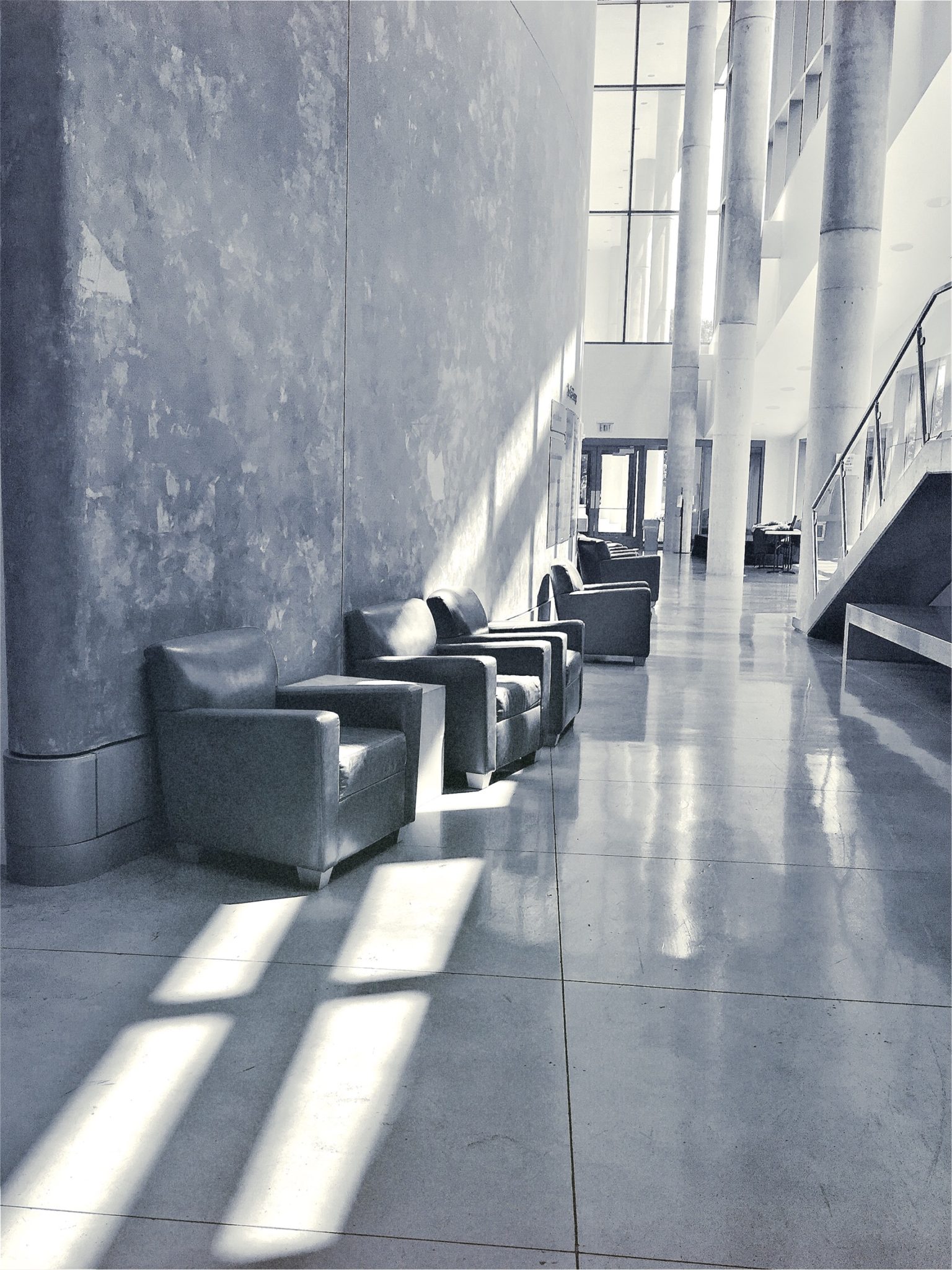

Now that I am retired, I am free to wander the countryside, happily snapping away to my heart’s content. The child who wanted to shoot photos of every conceivable subject has been redeemed. There’s a big, beautiful world out there, just waiting to have its picture taken. I take enormous pleasure in snapping shots of a favorite tree or bridge in the different light of day, in different seasons. Every hour of every day presents a new photo opportunity. It’s a new view of an old friend with every click of the shutter. Ironically, I cannot stop taking pictures of my children and my grandchildren. I am in constant stealth mode, camera phone in hand, hunting for the perfect candid moment. My mother would have gotten a big kick out of this.
Kat Meininger can be found on Instagram: mobile photography as @kats_eye_phone & DSLR photography as @kats_eye_images ; as the founder of @hipsta_crazy & Admin of @photomafia group of photo sharing galleries.

by Jeffrey Coolidge | Mar 14, 2017 | Jeffrey Coolidge, Stories, You Are Grryo
“Here Today Gone Tomorrow – The delicate balance of sand, water and life.”
I have been drawn to a thin spit of sand and scrub pine for the past 20 years. The landscape is shaped and re-shaped by storm after storm. Sand dunes, sculpted by the wind and sea, slowly shift, creating an ever-changing mural. The quality of light is otherworldly. Sand, water and weather are the key – high and low pressure fronts change so quickly light becomes ephemera.
The Cape Cod National Seashore comprises a majority of the landmass on the Outer Cape. It is shaped by vast stretches of dunes, bogs, ponds, forests and beaches – all accessible to anyone willing to hike in. The delicate balance of sand and water is a tug of war between the land and the sea. It is a powerful, yet fleetingly beautiful place.


My wife, Ellie, is an impressionist painter. She is a student of the Cape Cod School of Art, established by Charles Webster Hawthorne in Provincetown, Massachusetts in 1898. We spend our time together in the dunes and beaches of Wellfleet, Truro and Provincetown. We hike in and find a spot. Ellie sets up her easel, spending hours on one painting. As she works, I wander, studying the landscape. This change of pace has taught me to slow down, be patient, have faith in my composition and wait for the light. More often than not, the storm clouds persist, the light stays flat and nondescript. But on occasion, one is given the gift of a moment, the clouds break and the landscape erupts in beauty.
I visit these haunts ritually, photographing and re-photographing the landscape. It is a form of meditation, a cathartic experience where the quality of the light transforms the familiar to the unreal.
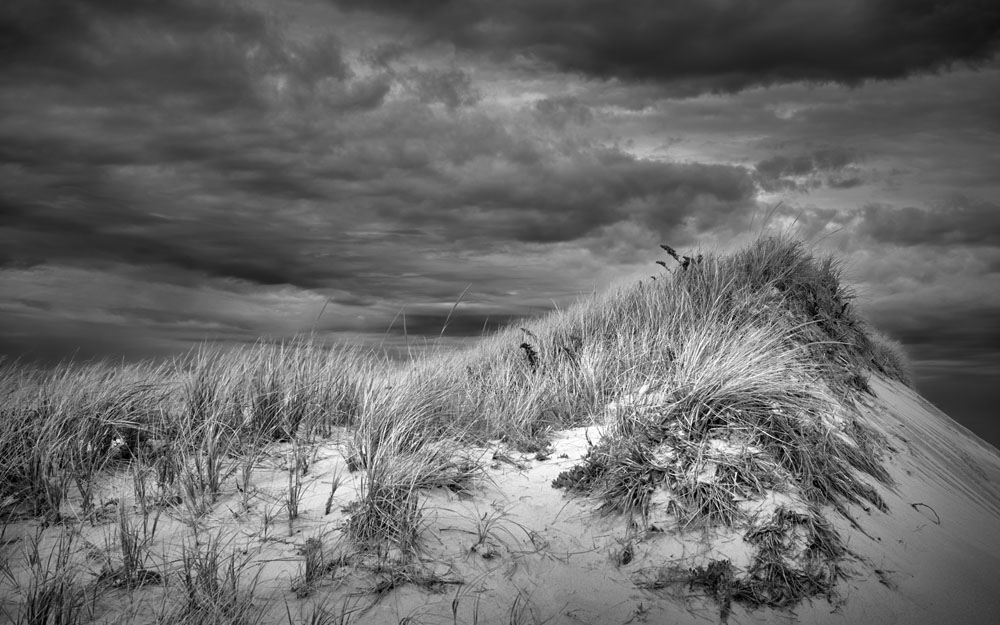

As vulnerable as this habitat is, it pushes back against human attempts to protect it. Snow fences, erected to slow the movement of sand and inevitable erosion, are buried and crushed by the constant flow of wind and water.
Concrete piers and stone breakwaters are eventually broken by the tides, washed out to sea or left upended, a relic from the past. These crumbled and submerged forms are a testament to the natural powers that ravage the land.


The forces of nature are hard in the dunes. Flora is stunted and twisted, a wonderful contrast against the windswept sand. Competition between species, the perpetual fight for patches of fertile soil, creates a visual pallet of color and form. Natural boundaries between salt water species and fresh water species forge delineated lines that crash into a swirling patchwork of hue and texture.


It comes down to water. Frozen water formed the Cape. Glaciers deposited their till, forming the landmass. Water grinds the rock to sand. And water will eventually reclaim this thin spit of land, sucking it back into a dark and hidden tomb. One could say, what the water gives the water will take.
But for today, it’s the water that charges the light, opens the shadows, pushes the weather and gives the gift of this mystical place.


Thank you for taking the time to read and look at my photographs.
To see more of my photos, please visit me on: Instagram | Website.

by George Pavlopoulos | Mar 7, 2017 | George Pavlopoulus, Stories, Storyteller, You Are Grryo
I grew up next to the sea and I felt that I had everything: an endless summer, the song of the cicadas, a bunch of faces that refused to grow old and the taste of watermelon under the pine trees. The sea resembled an uncultivated field, where childhood was constantly being reborn and rewarded. I don’t remember all the faces I met, but I do somehow recall sudden expressions and fleeting images: the talk of older people before sunset, the whispering lips of women, the sweating foreheads of busy men, the agony for the coming winter, as well as the promise that a triumphant summer will conquer our lives again.

Then I lost the sea and the transition was violent. Entering the next phase of life kept me occupied but I could hardly somehow manage to return back to the early days. I wasn’t nostalgic or pessimistic; I was just longing for some sort of simplicity, a way of life based on spontaneity, on free will and on outspoken truths. Adulthood did not arrive as a blessing but as the fulfillment of a dreary prophecy. All the potential punishments of our childhood became our daily adult routine: “you’ll be left alone” or “you won’t get any money” or even “you are not allowed to go out”.
The legendary summers looked like shipwrecked boats; they couldn’t set sail because they were too damaged, nor could they reach the shore and start all over again clean. I equipped myself with artifacts, some long existing objects, humble in their existence, easy in their use. Technology has altered them but it didn’t taint their soul. They seemed to have been always there, on that remote planet, as a way of expression and their purpose was to create worlds that we’d probably never visit.

“Yellow Balloon”, Athens 2016
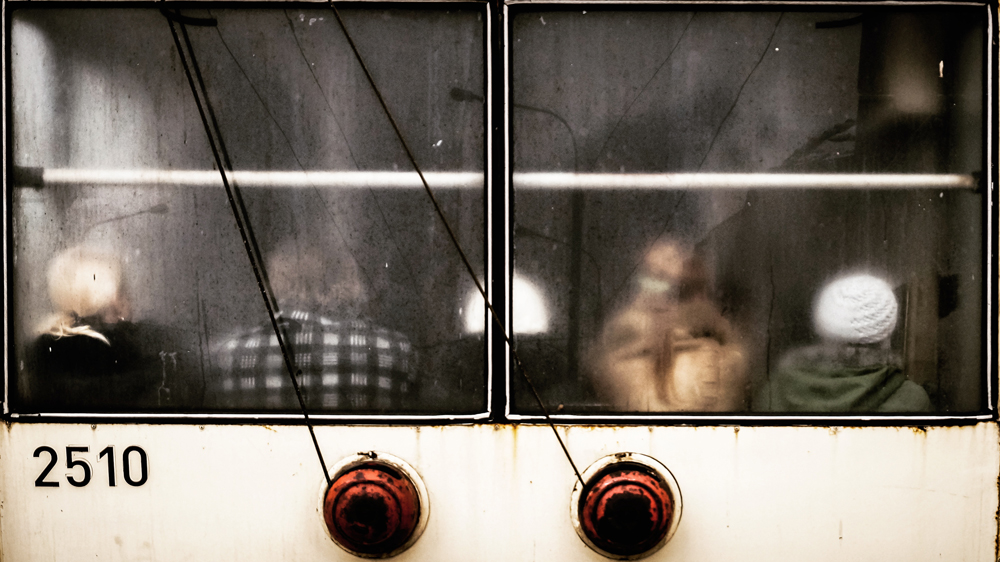
A family of sorts, Vilnius 2016
At first it was a pen and a paper, then a typewriter and later a laptop. Despite its technological evolution, the soul of the written word did not change and there will always be someone willing to lock his body -but not his spirit- into a silent room and start writing. Respectively, at first there was a smartphone, then a compact camera and later a bigger one. Contrary to the ancient belief, images do not consist of a thousand words; they consist of all the words we were not able to write.

“Wrinkles and movies”, Bologna 2016
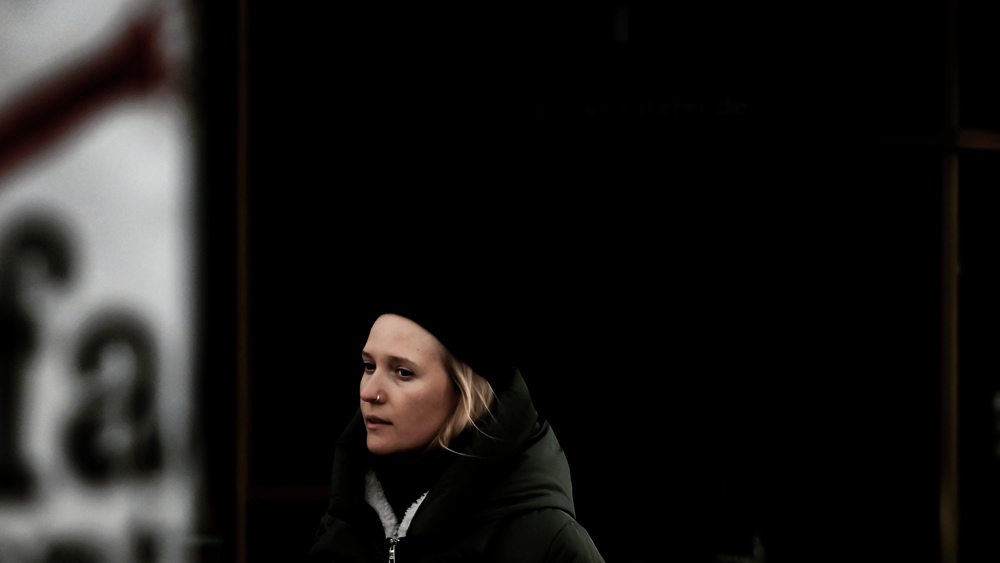
“Far Away”, Berlin 2017
I can never afford to lose people, but when I started dealing with absence it seemed to me that there was only one way back: the narrative. Through writing I felt I could re-visit, through photography I felt I could re-see. The return to childhood has nothing heroic in its heart and I could never identify with Proustian moments. It was simply that old longing for simplicity sending me to the white paper or the black film.
The white paper and the black film are always an interpretation of a narrative that fails to be resonated: words that fail to be written deliver always a white paper, while photos that fail to be taken deliver always a black image. The eternal battle of the two irreconcilable colors is not only a clash between light and darkness but also the inability of self-expression on a given day. If the creative adult is indeed a child who has survived, one can only imagine how painful a white paper or a black film really feels.

“No man’s land”, Berlin 2017

“The Letter”, Athens 2017
I can’t recall most of the faces of these old summers. They seem to be lost in a sea of oblivion and they are only allowed to emerge for an instant every now and then. Nowadays I spend less time in front of the sea and I am not that spontaneous anymore. I’m spending most of my days in big cities, where History adds an extra weight on the already long faces of the Europeans. Sunny days are good for the body, but only the cloudy ones make me feel really productive. I’d wake up rather early and I’d write until noon; then, I’d take my camera in hand and go out.
The city is crowded and I’m searching for dark corners, spots where the contrasts are magnified. I’m standing there for twenty, maybe thirty minutes. I’m waiting for a face to appear from the darkness, somebody that will remind me of the people I used to know: faces from past summers, lost loves, absent friends, people I rarely see. Some days no one appears, but I live for the day that a familiar face will emerge from the darkness. This is a re-connection of sorts, a short return to the simplicity of childhood: a person, an expression, a scene. The memory is finally serving its purpose, which is to remind us who we really are: we are nothing more than a patchwork of all the people we ever met. For a dense moment I feel like being in front of the sea on a warm summer afternoon. I am extremely young again, I am revolted against oblivion and I’m fishing in the abyss.
THE END
George Pavlopoulos is the author of three novels. He has also written several travelogues and short stories. You can see more of his work on his Website as well as on Instagram.

“Only the inventors survive”, Athens 2016
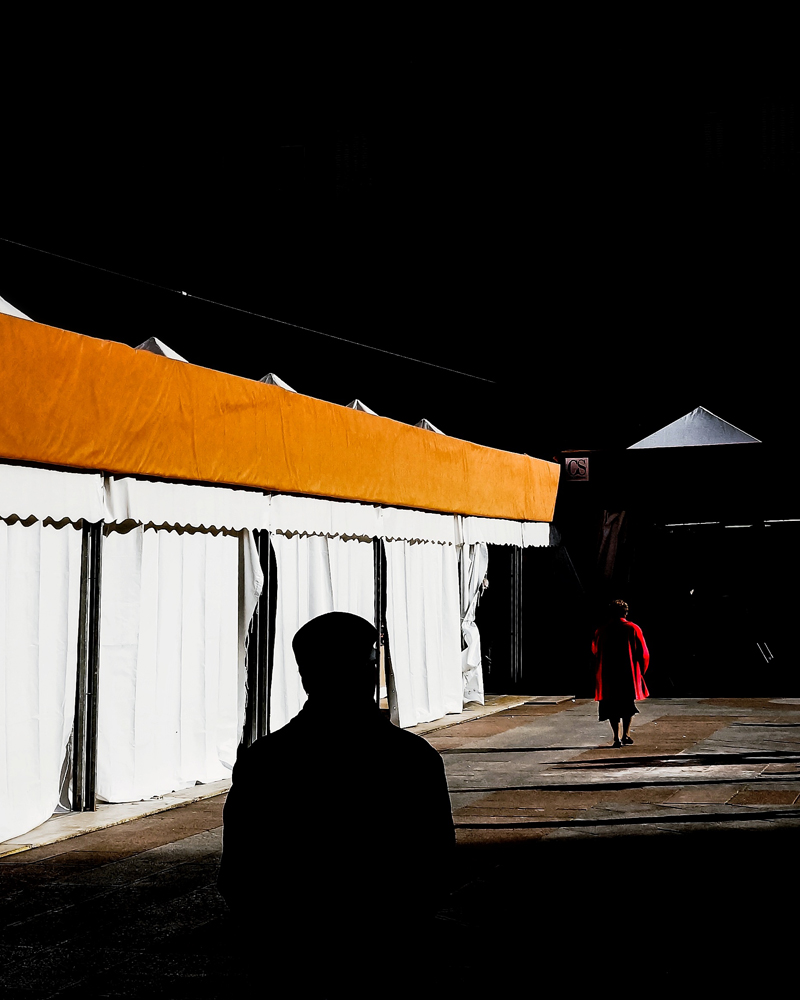
“The journey of sand”, Bologna 2016

“The man who could not dream”, Berlin 2017

Kings in water, Budapest 2015

“Ghosts”, Athens 2016
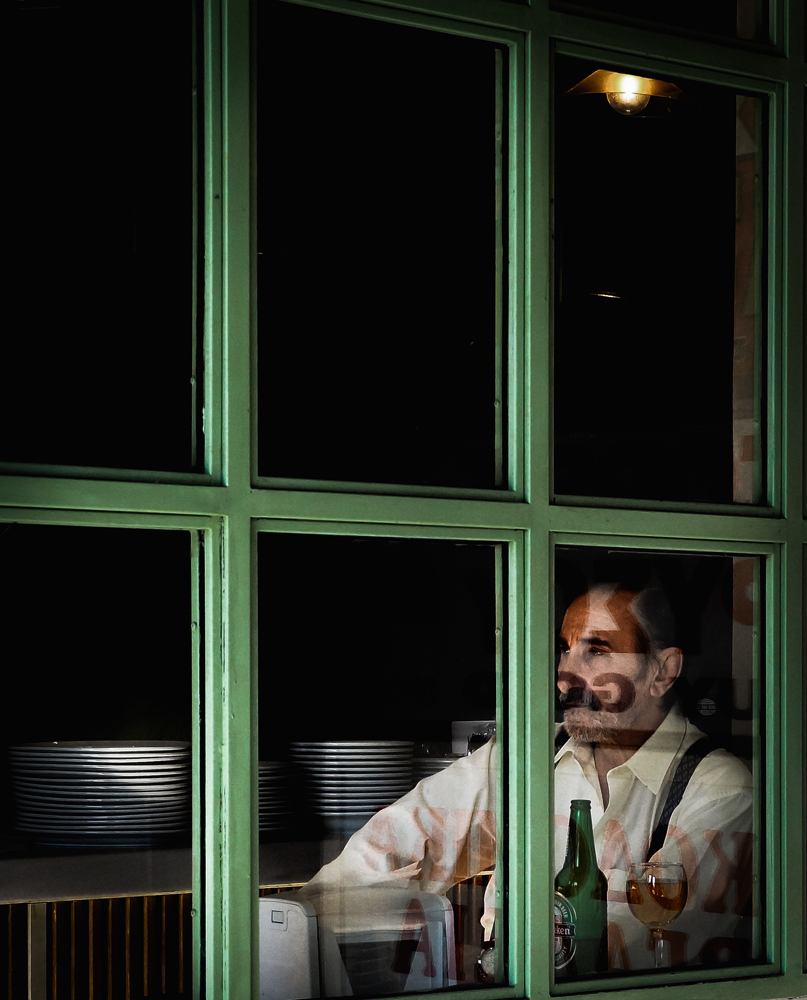
“Early summer”, Athens 2016

“Christmas”, Berlin 2016

Towards the future, Berlin 2017

by Grryo Community | Feb 27, 2017 | Stories, You Are Grryo
Rainy day in Saint-Malo, Brittany, French West Coast. Cloudy sky. Sea spray. Soft and salty droplets carried by the wind. Walk by the sea on a rainy day and smell the perfume of the sea. The Ocean breeze.
Sometimes umbrellas are open. Dark or light spots sprinkled in a seascape with grey tones. The black and white come alive; the texture arises and catches the eye. Slowly. The umbrellas swing, quietly, to the rhythm of wandering walkers.

Stormy weather. Sometimes the weather is less clement, the sky changes, the wind rises, dark clouds are running in the sky, walkers hurry to shelter from the rain that arrives, from the wave that splashes, from the sprays that sting. With the high and low tides, the weather changes quickly by the sea, the sun comes back, it illuminates the landscape and the walkers, it warms the colors, it dries everything, and the umbrellas close again immediately.

My umbrella walkers are often alone. Contemplative. Lost in their thoughts. Looking towards the horizon. Immobile or in motion, anchored in a marine landscape that offers every day a new way of looking at it, even in rainy weather. Whether on the beach, in the cobbled streets, on the Sillon, the floor offers a different light to photography. Black and white act as a poetic revealer. It reinforces the effect of loneliness, accentuates the melancholic or meditative atmosphere, tells an unfinished story, a story to be written.
Go out and take pictures on a rainy day. Walk with the rain, or against it, feel the wind, the raindrops, the spray on your face. Observe the sky and the surrounding landscape, slow down and feel.

A walk through the rain and maybe a photo at the end of the road. This is the path that I follow on Instagram with no specific purpose. At random. Black and white photographic peregrinations written with commas and dots. To be continued…
I warmly thank Grryo for letting me share some of my Brittany here with you. Thank you for this beautiful lighting. Let the beautiful part of photography, writing, creation, documentary, art, a visual aside that opens the eyes and heart, congratulations to them. We are Grryo.
Tiphaine, @tiphdiadel, in real life, works in publishing ; on Instagram, walks with a smartphone ; founder of @bnw_bretagne : a photograph and a story, another look on Brittany.

Embruns. Balade en bord de mer, chapitre 2.
Un jour de pluie pluie à Saint-Malo. Ciel chargé. Embruns marins. Gouttelettes douces et salées portées par le vent. Se balader en bord de mer, un jour de pluie et sentir le mélange des fragrances marines. Air marin. Parfois les parapluies sont ouverts. Taches sombres ou claires parsemées dans un paysage marin aux tons gris et délavés. Le noir et blanc s’anime alors, la texture surgit et accroche le regard. En douceur. Les parapluies se balancent, tranquillement, au rythme de la marche des promeneurs.

Temps orageux. Parfois, le temps est moins clément, le ciel change, le vent se lève, des nuages larges et sombres courent dans le ciel, les promeneurs se hâtent alors pour se mettre à l’abri du grain qui arrive, de la vague qui éclabousse, des embruns qui piquent soudain. Avec la marée, la météo change vite en bord de mer, le soleil revient, il illumine les paysages et les promeneurs, il réchauffe les couleurs, il sèche tout alentour, et les parapluies se referment aussitôt.

Mes promeneurs au parapluie sont souvent seuls. Contemplatifs. Perdus dans leurs pensées. Le regard tourné vers l’horizon. Immobiles ou en mouvement, ancrés dans un paysage marin qui offre chaque jour une nouvelle façon de le regarder même par temps de pluie. Que cela soit sur la plage, dans les rues pavées, sur le Sillon, la texture du sol offre un éclairage différent à la photographie. Le noir et blanc agit comme un révélateur poétique. Il renforce l’effet de solitude, accentue l’ambiance mélancolique ou méditative, raconte une histoire inachevée, une histoire à écrire.

Sortir et photographier par un jour de pluie, en bord de mer. Marcher avec la pluie, contre la pluie, au gré de la pluie, c’est sentir le vent, les gouttes fraîches, les embruns sur le visage. Observer le ciel et le paysage alentour, ralentir le ryhtme, sentir.

Une promenade et peut-être au bout du chemin une photo. C’est le sentier que je suis sans but précis. Au hasard. Des pérégrinations photographiques en noir et blanc écrites avec des virgules et des points de suspension. À suivre…
Un immense merci à toute l’équipe de Grryo de m’avoir accueillie une nouvelle fois. Laisser la part belle à la photographie, à l’écrit, à la création, au documentaire, à l’art, une parenthèse visuelle qui ouvre le regard et le cœur, bravo Grryo.
Tiphaine, @tiphdiadel, dans la vie, travaille dans l’édition ; sur Instagram, jse promène avec un smartphone, a créé @bnw_bretagne : une photographie et une histoire, un autre regard sur la Bretagne.

by Grryo Community | Feb 24, 2017 | Stories, You Are Grryo
While perusing my photographs from the last year, I was surprised to notice that I had started photographing women much more often than men. But not just women in general, it was women who seemed to be preoccupied or burdened by something, suspended in their own quiet space, within the milieu and movement of the city around them. How had I developed such a pattern photographically without even being aware of it? It was only in writing this story that I began to explore why I was drawn to these solitary female figures in which I saw subtle expressions of the same anxieties or unease that I had felt at varying stages throughout my life.


Of course anxiety or unease is not confined to women alone, and I have been attracted to photographing this quality in men as well. But the sheer volume of female subjects over the last few months suggested to me there was something more to it and I began to explore the tensions and dichotomies in my own life that had been sources of anxiety, but were also related specifically to being female:
I have felt empowered by being considered youthful, attractive and seductive, yet disempowered by being objectified and undervalued.


I have felt empowered by being independent and career focused, yet disempowered by being judged for being single or not having children.


I have felt empowered by finding love, getting married and settling down, yet disempowered by my single female friends who felt I could no longer relate to their struggles.


I have felt empowered by being older, wiser and more confident, but disempowered by the stresses of family and society’s changing view of me in the face of physical ageing.


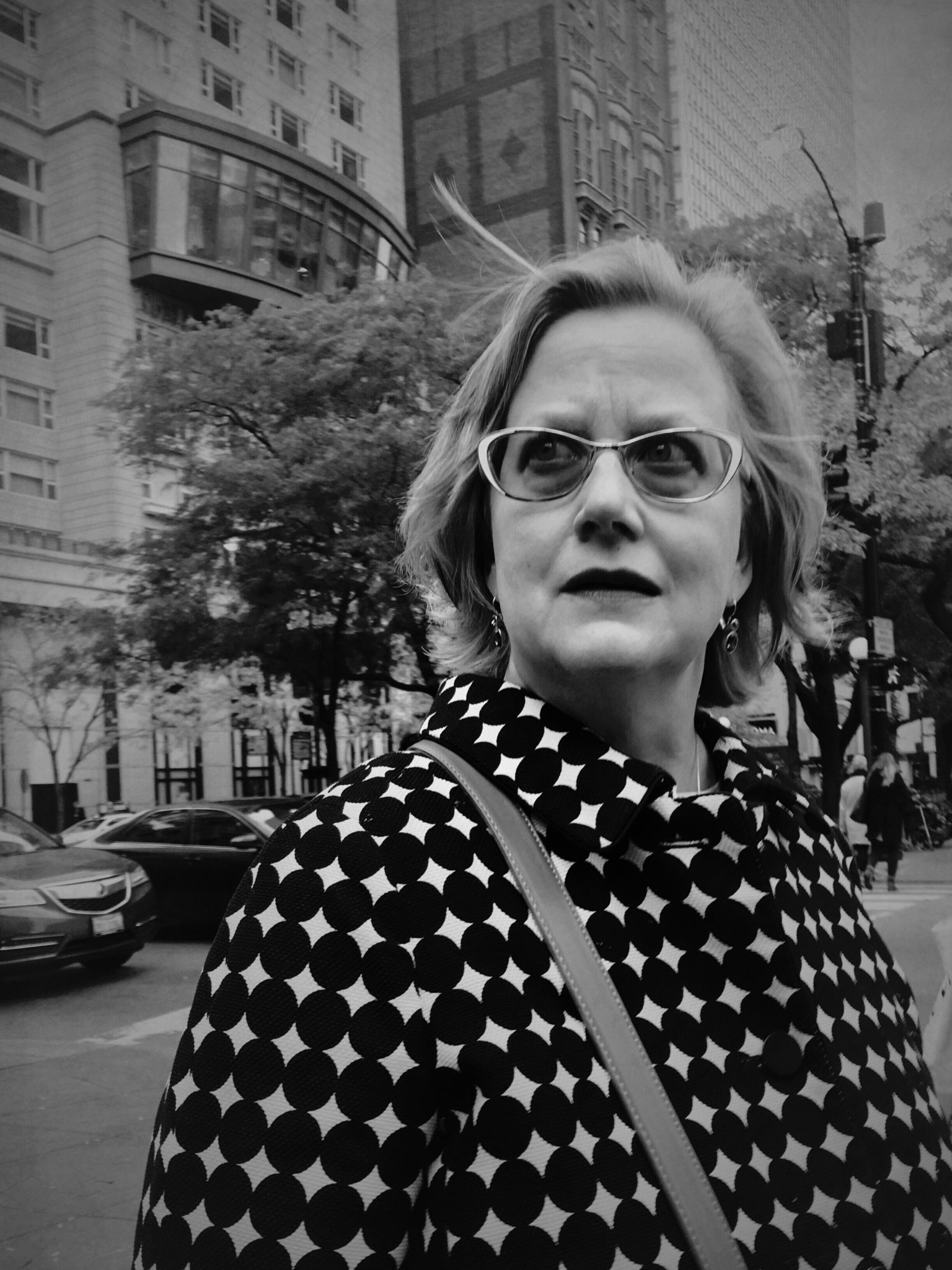
I use the word empowerment because in all of these women I have photographed, I see an underlying strength, a steely persistence beneath the expressions of concernment or vulnerability which outweighed and outplayed any feeling of ‘disempowerment’.
I began thinking about Laura Mulvey’s infamous writings on the ‘male gaze’ in her essay Visual Pleasure and Narrative Cinema. Mulvey argues that Hollywood cinema, for the most part, follows the patriarchal ideology of society and (without realizing it) places the audience into the perspective of a heterosexual man. “In a world ordered by sexual imbalance, pleasure in looking has been split between active/male and passive/female”, denying the woman her human identity and objectifying her. As a female street photographer in a primarily male dominated photographic medium, my focus on women then becomes twofold—I am inherently interested in women because I am one of them, but I am also able to challenge the philosophy of the male gaze by finding those women that project expressions and personalities that force the spectator to look deeper, beyond the surface— in other words, I want to photograph women because they have a story to tell, not because of their inherent ‘to-be-looked-at-ness’. To be sure, the story they have is one which can only be guessed at and one which will be intrinsically shaped by the viewer’s own worldview and experiences, as I demonstrated in the abovementioned examples.
Having observed and admired the work of other street photographers who find ‘scenes’ to photograph – whether it be two or three people interacting, or a person caught amidst diverse elements in the environment (for example a bus going by, a bird flying into the frame) – I persist with trying to capture the person, and only the person. In isolating the solitary figure, and highlighting their expression, the viewer is prompted to look within, rather than around, for the story.
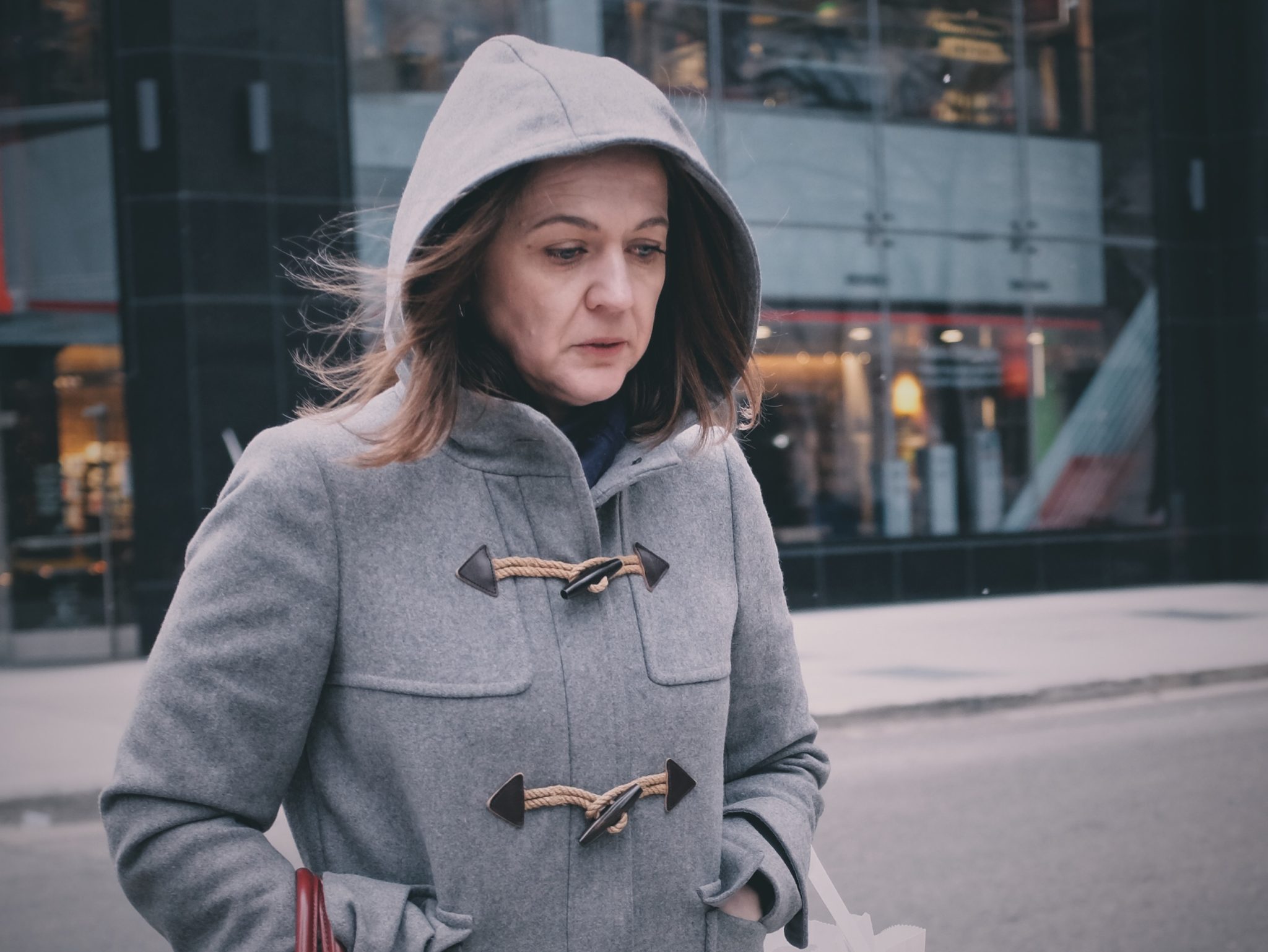
In the same way I had begun to think differently about the female faces I had been photographing, I also began pondering my series of ‘faceless’ women. I had taken a number of these, never staged. I was fascinated by the way their expressiveness came through in their posture and that there was always a narrative to be found not in their gaze, but in what they gazed upon. It felt like all of them were searching for something, and looking cautiously but optimistically ahead, again suspended for a moment in their own contradictions. What were these contradictions or these struggles? What were they searching for? The goal of street photography is never to deliver answers but to raise questions.
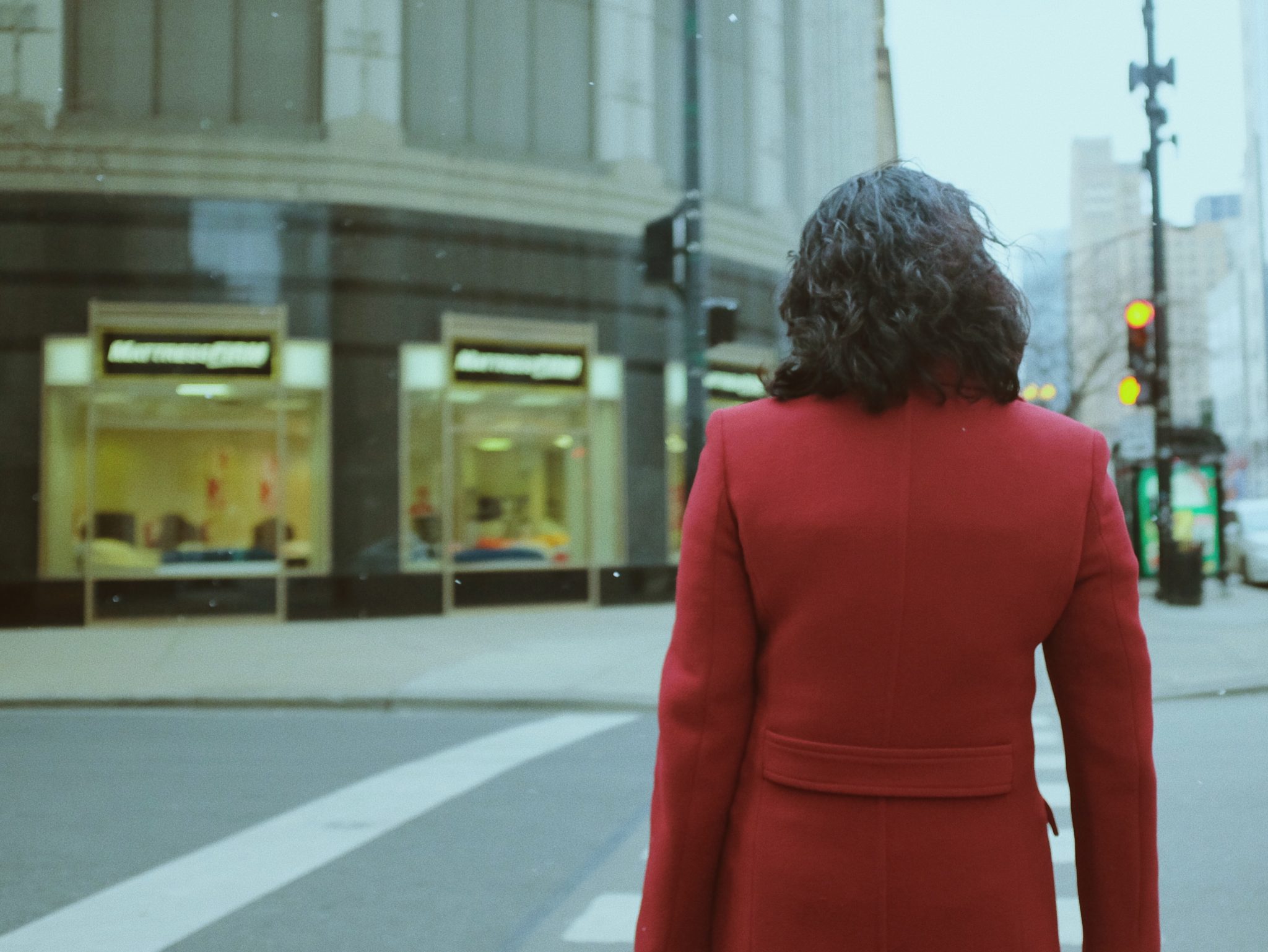


Lauren Louise is a street photographer based in Chicago, IL. You can find her on : Website | Instagram

by Grryo Community | Feb 17, 2017 | Anne Closuit Eisenhart, Still Life, Stories, You Are Grryo
I remember, as a child, fumbling in the complete darkness of my bedroom. The clock having just struck my morning anxieties, and myself heading toward the window to summon the day into the room. Rolling up the night around the slats of the blind, the picture of the wakening day gradually unfolding before me. I usually paid little attention to it. A glimpse that made me feel both reassured that the world was still out there, and worried my school was too.

Some mornings had a different feel though. As soon as a glimmer of daylight crept into the dark, I already knew at its particular brightness that the day would hold different promises. It had snowed and perhaps it might keep snowing!

When I reminisce over the snow days of my childhood, I cannot single out or describe this or that particular day with its own distinct facts. Yet alive in me are a set of moments spreading from this time, grouped in my mind by a similar naïve joy, etched with such emotion that my memory has decided to gather them into one souvenir.
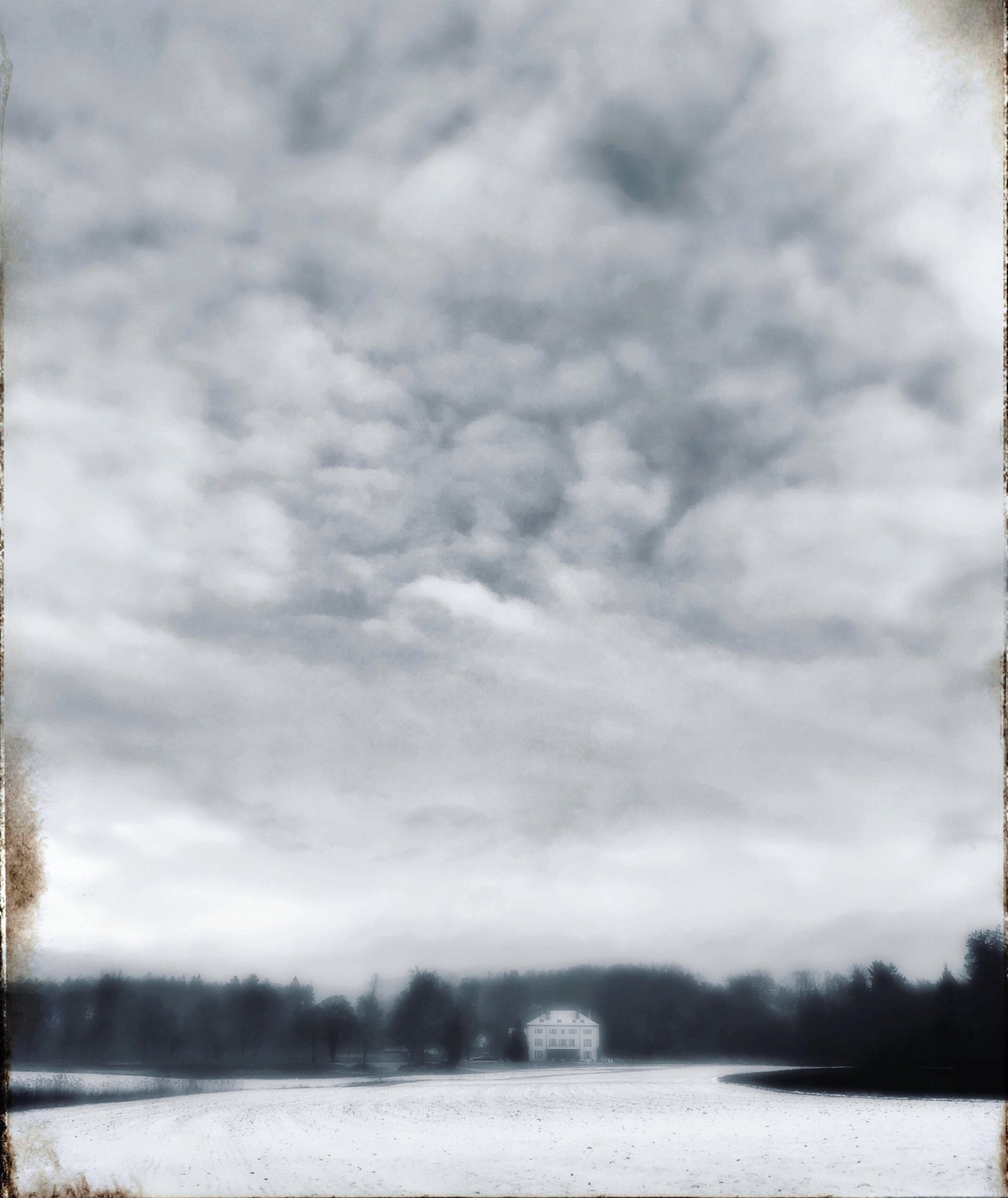
And I can see myself, pulling a chair by the window and watching the snow come down slowly over the wet plain, settling silently in the hollows, on the roofs, seizing the roads and the alleys, covering the ugliness brought on by the day. Then, having made everything even, everything level, it is forced to accept it must fall on itself. At this point, one’s attention is no longer drawn to anything and ceases to recognize. And now one can only see one’s own images projected on the white screen offered by the winter.
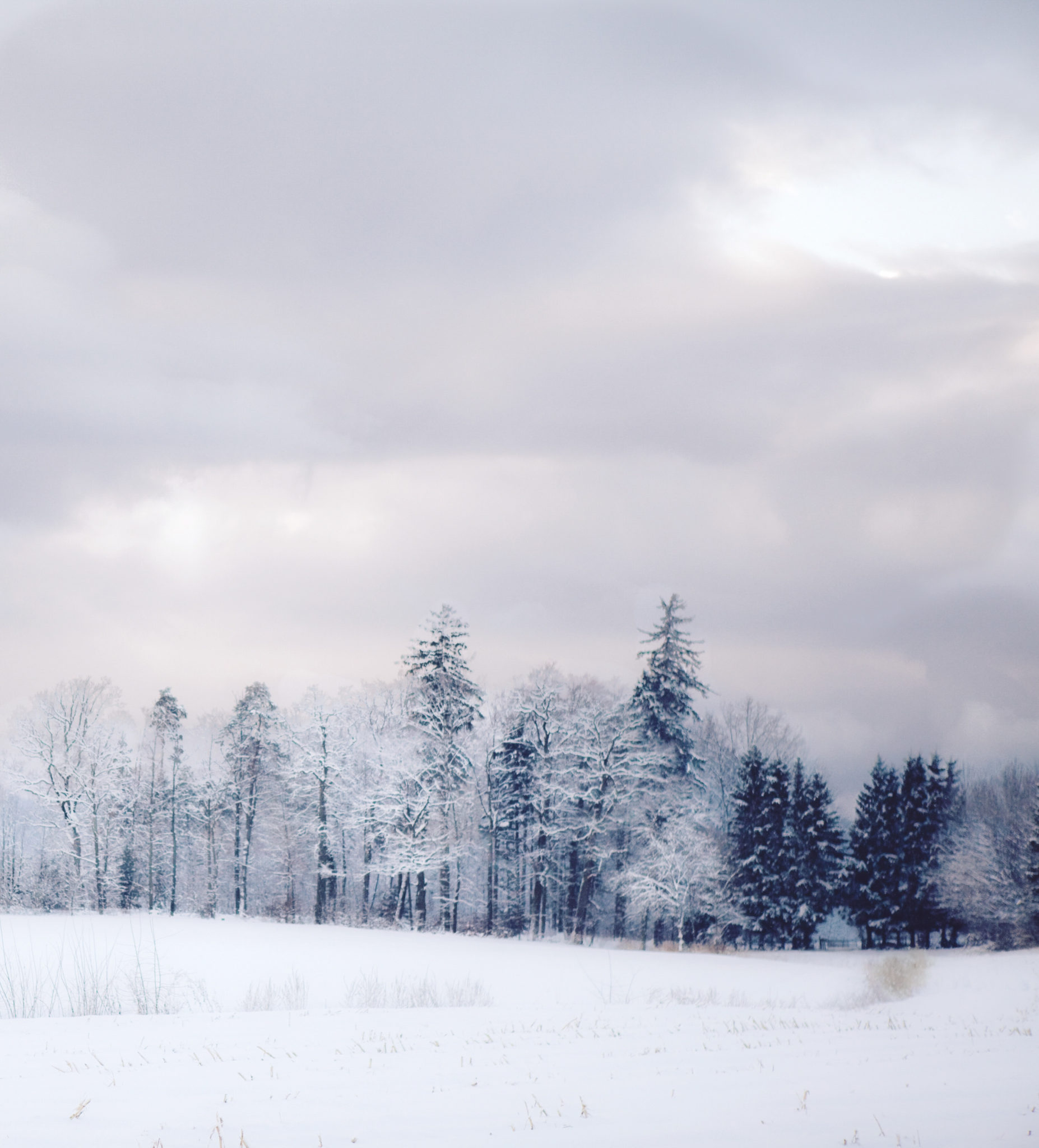
Or, I was outside. Snow had stopped and I was trying to identify parts of the scenery, my playground, my bicycle under a bump. And it was like attempting to read a book in a foreign language, familiar enough to follow the story line, yet not the details.

To this day, I prefer winter to any other season. Not only the snow, but the cold that enlivens or numbs. The fury of the wind when it blows the leaves off and gives them back to the earth, which later chews them and gobbles them up. I enjoy this harshness and this severity. People meet and get to the essential, because it is too cold to linger and tell more.

I enjoy the monotonous landscape. The nature when it depletes, gathers itself, and mourns. The ground that is brown then grey then white then dirty. The flight of the birds that is shorter and heavier. The way they suddenly flock into bands, ruffle the trees and the electrical cables. The ones that decide to remain lonely.

I enjoy watching the night as it awakens the day with the city lights turning on one by one like fireflies on a summer night. The shadows are longer, more present in the home. Our lives languish, it is a slower time, allowing us to look backward. As when walking in the snow, we have to stop and turn around in order to see our own tracks.

And last, I enjoy winter when it shies away, out of breath, and suddenly gives way to perpetual renewal, to the sweet illusion we call Spring.
Anne Closuit Eisenhart is @lesfifoles on Instagram
Ode à l’Hiver – Par Anne Closuit Eisenhart
Je me revois, enfant, avancer à tâtons dans le noir de ma chambre. Le réveil venait de sonner mes angoisses matinales et je me dirigeais vers la fenêtre pour convoquer l’aube dans la pièce. Tandis que j’enroulais la nuit autour des lamelles de mon store, se déroulait à mesure devant moi le tableau du jour qui s’éveillait. Je n’y prêtais d’habitude aucune attention particulière. Tout juste un regard qui me rassurait car le monde était toujours là, et qui m’inquiétait car mon école aussi.
Certains matins, il en allait différemment. A peine un rai de jour se glissait-il dans l’obscurité que je savais déjà, à l’éclat spécifique de la lumière, que la journée tiendrait d’autres promesses. Il avait neigé et peut-être neigeait-il encore…

Quand je me remémore les jours de neige de mon enfance, je ne peux bien sûr pas décrire telle ou telle journée précise avec ses faits bien à elle. Mais continue de vivre pourtant en moi un ensemble de moments s’étalant dans ce temps, regroupés dans mon esprit par une même joie naïve, inscrits avec suffisamment d’émotion pour que ma mémoire décidât de les réunir en un souvenir.
Et je peux me voir, tirer la chaise près de la fenêtre et regarder la neige descendre lentement sur la plaine humide, s’installer, silencieuse, dans les creux, sur les toits, s’emparer des routes et des chemins, recouvrir la laideur amenée par le jour. Puis, quand elle a rendu tout égal, quand elle a tout nivelé, se résoudre à tomber sur elle-même. Alors le regard n’est plus arrêté par rien et cesse de reconnaître. Et l’on ne fait plus que voir ses propres images intérieures se projeter sur l’écran blanc que nous offre l’hiver.

Ou encore, j’étais dehors, il avait cessé de neiger et j’essayais d’identifier le paysage, mon terrain de jeux, mon vélo sous une bosse. Et c’était comme tenter de lire un texte dans une langue étrangère suffisamment familière pour qu’on en comprenne la trame pas assez cependant pour qu’on en saisisse tous les détails.
Aujourd’hui encore, je préfère l’hiver à n’importe quelle autre saison. Pas seulement la neige, mais aussi le froid qui vivifie ou engourdit, la fureur du vent qui arrache les feuilles des arbres et les rend à la terre qui les mâche puis les engloutit. J’aime cette rudesse, cette âpreté. Les gens se croisent et se disent l’essentiel car il fait trop froid pour en rajouter.
J’aime le paysage monotone. La nature qui se dépouille et se recueille. La terre brune puis grise puis blanche puis sale. Le vol des oiseaux qui est plus lourd et plus court. Cette façon qu ‘ils ont soudainement de se mettre en bandes, d’hérisser les arbres, les fils électriques. Ceux qui décident de rester solitaires.

J’aime guetter la nuit quand elle réveille le jour, et regarder les lumières de la ville s’allumer une à une comme des lucioles un soir d’été. Les ombres sont plus longues, plus présentes dans la maison. Nos vies se traînent, c’est un temps plus lent, fait pour regarder en arrière.C’est comme quand l’on marche dans la neige, il faut s’arrêter et se retourner pour voir ses pas.
J’aime enfin l’hiver quand il se dérobe et, à bout de souffle, cède la place à l’éternel recommencement, à la douce illusion qu’est le printemps.
Anne Closuit Eisenhart est @lesfifoles sur Instagram

by Grryo Community | Feb 13, 2017 | Stories, You Are Grryo
You can tell a lot about a person by what they photograph
There are the ones who photograph their meals at a restaurant, positioning each element carefully. There are those who only photograph their kid’s laughter and smiles to keep them young forever. Some photograph for archival purposes, as a “note to self”. I choose all of the above. I choose to document every aspect of my life in photographs.
I have a fear of forgetting. Our memories are unreliable. We’re selective, recalling the bits and pieces we feel are most important. So whenever I see something too beautiful for words, something that makes me laugh out loud, or just something I want to share with someone later, I get out my iPhone and capture it. I want the moment to live on so I’ve developed a habit, an obsession some may even say, of digitally recording.

San Francisco city view from Bernal Heights Park during the golden hour, just before sunset. Shot on iPhone 6, edited with VSCO.
I love themes, especially in photography. My reoccurring theme is San Francisco. If you look close enough you’ll find it hidden everywhere. My favorite subject to shoot is the Golden Gate. There’s something about the red/orange hues, the pillars of strength, the fog weaving in and out; it’s an indescribable feeling I have whenever we meet.

San Francisco’s Golden Gate bridge from Vista Point, Sausalito. Shot on Canon 5D Mark III with 50mm f/1.4 lens.
San Francisco has always been a magical place for me. I can remember being excited as a kid to spend the day in the city with my dad and sister or brother. It was usually just to a “touristy” area like Pier 39 or Fisherman’s Wharf (my dad loves the clam chowder). I had no idea there was so much more to discover in this enchanted land and I wouldn’t for several years.

Signage in Fisherman’s Wharf, San Francisco.
Maybe it was the cheesy souvenirs, the sweater weather, the food, the crowds the sea lions attracted, or the people who walked the streets with purpose and freedom. I honestly have no idea what happened to make me fall so hard for this city but it started way back then. I’ve grown up since but never out of love; my first love.

San Francisco skyline from the Larkspur Ferry.
I look back at pictures taken of me from disposable film cameras standing in front of random, insignificant things and I’m struck by one familiar theme, an uncontrollable smile.
Throughout our lives we go through many ups and downs though we tend to recall the negative more than the positive. I’ve lost myself too many times but I’ll always find myself again, in this city.

Mission Dolores park in San Francisco, November 2010.
I haven’t always been as passionate about photography as I am now. Though I’ve pursued photography for many years, over a decade of my life, there were a few chunks of time between when my camera and I were distant from one another. Each time might be for a different reason relating to that season of my life but looking back now, I know the underlying reason that connects them. I hadn’t found my muse yet.
I’m not advocating you sit and wait for inspiration to strike to pursue photography or any form of creativity for that matter. Instead I encourage you to go after it. Inspiration isn’t something you can search for, it has to find you working.

Walking across the Burrard bridge in Vancouver, British Columbia. Shot on Canon 5D Mark III with 50mm f/1.4 lens.
Learning to see the world in a new way
At first photography was something I did on a vacation or a mini road trip away from home. It was about capturing the moments to remember them later. But slowly I began to see the world in a new way. That’s what photography does to you. You see things differently, you notice what others don’t. And this is the exact reason you are meant to be a photographer, to share your vision with those who can’t see it for themselves.

Shot on iPhone 6 with Lensbaby mobile lens, edited with VSCO.
A personal journey
I’ve always felt photography is a personal journey and perhaps that’s why it took me so long to share my work with others. Art stems from a private place inside. Sometimes the artist doesn’t understand the reason they’re drawn to create, they only feel the pull. Photography is no different. I couldn’t tell you why I felt such a strong connection to the medium, I only knew I needed to keep going.

Burrard bridge in Vancouver, British Columbia. Shot on Canon 5D Mark III with Lensbaby Composer Pro 50 lens.
Transforming your muse into photographs
You have a muse too. Maybe you already know what it is or maybe you have some more soul searching to do. Either way, when you find it you’ll know. I can tell you from experience it’s worth the wait. Sometimes it’s a person, a specific object, or in my case a place. It varies from one artist to another.

Seattle cityscape from the Space Needle.
The only way to speed up the process of finding your muse is to keep photographing. It’s going to take a lot of bad photographs before you find the ones that light a spark in your heart and lead you down the path you’re meant to follow. Keep shooting, keep practicing and never stop experimenting. If you’re bored with one genre of photography, pick up another. There are no rules to finding your muse except you can’t give up.

San Francisco’s Golden Gate bridge from the Marin Headlands. Shot with Canon 5D Mark III with 50mm f/1.4 lens.
Looking for a little inspiration to get you out there shooting and improving your photography skills?
Check out Fall in Love with Photography, a free 7 day photo challenge to kickstart your photography! Every day for one week you’ll receive a new photo challenge right to your inbox. Each challenge features a theme with plenty of tips and ideas to get your creativity flowing. Click through to join and get started!

To find out more about Monica you can find her on monicagalvan.co and Instagram @mlynngalvan
Monica Galvan is a photographer based in the Bay Area of California. She specializes in San Francisco cityscapes and urban environments with a vintage touch. She also teaches aspiring photographers how to find their visual voice with photography at
monicagalvan.co

by Leandro Leme | Feb 2, 2017 | Leandro Leme, Staff Picks, Stories, You Are Grryo
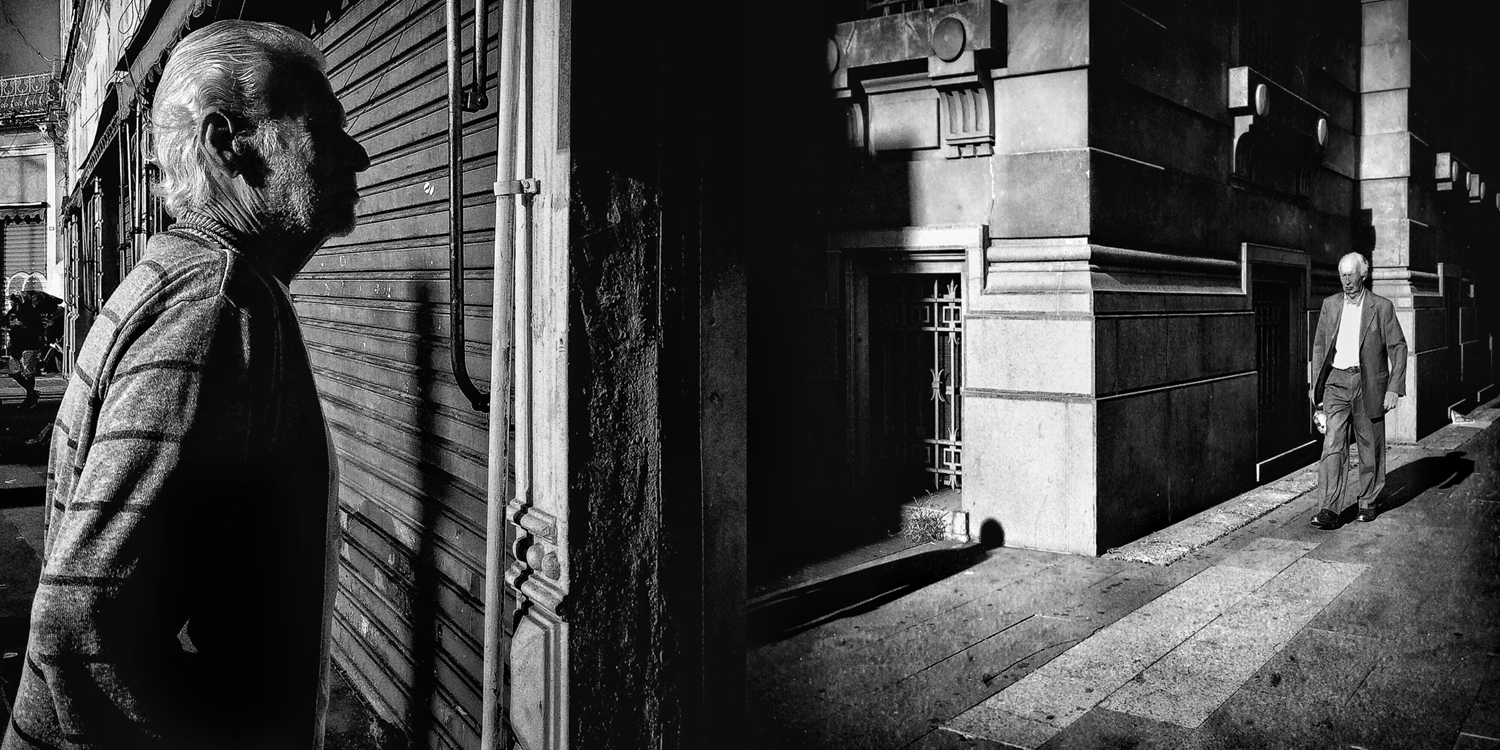
The labyrinthine streets spread like cracks on the downtown area of São Paulo. I walk shouldering my way through the crowd, keeping the man in my line of sight.
The street I chase him on is older than the very foundation of the city. It already was a path crossed by animals and natives along the forest, before the Society of Jesus forged a spiritual connection with the Madhat Pasha street in Damascus. São Paulo was meant to be the Heaven’s Capital on Earth — so it’s written on the letters exchanged between the Jesuits. Truth is, it became a kind of El Dorado of Brazil. Drifters from all over the country seeking fortune on this piece of land, mostly failing nowadays.

I’m trying to make some sense of my woolgathering. It comes with the job, I suppose.
The job isn’t new — you’ve already seen the story. Maybe you even took a part on it. It all comes down to someone wishing something one can’t have.
I could tell my client exactly how the story ends, but I wouldn’t get paid for playing Sherlock. The job has taught me that seeing is important. People are drawn to suffering like moths to lamps — a kind of messed up script hardwired in our brains.
I’m not a monk to delve into the philosophy about it, nor a scientist to prove it. I tell what I see, that’s all.
I wait for the man to exit the restaurant. He’s oblivious to me, although I’m a little too big to ignore. He’s alone, without the briefcase. I know where he’s headed to, so I decide to go somewhere else.

São Paulo was known as “the land of drizzle”. Things have changed during the last decades — for the worse, if you ask me.
It’s Autumn, but it doesn’t feel like it. This temperature could be Summer in any northern hemisphere country. I wonder if the heat loosen the reins of civility here, making people less patient, less good tempered.
Regardless, businessmen march with their dark suits and bright ties on the shadows of financial buildings. They march side by side with the ever growing homeless population, ignoring them behind their sun glasses, puffing on cigarettes and checking their phones. Billboard men on every corner wear plaques advertising gold and diamond brokers, shady attorney services, the sale of doctor’s notes for paid absent days at work. They have blank stares and tanned, cracked skin because of the sun. I wonder where their minds wonder.


I see the woman where I already knew she was. It’s a matter of pattern recognition. People are much more predictable than they think.
When she gets tired of waiting, I follow her. I debate for a moment about my options here. I decide to play by the rules of common sense.
She walks like a ghost, dragging invisible anchors and lost in her reveries. I wait by the old phone cabin as she takes a turn and faces the sun, as if this path could lead her to some kind of enlightenment. Or maybe it’s just me, seeing her story as mine. Pattern recognition.
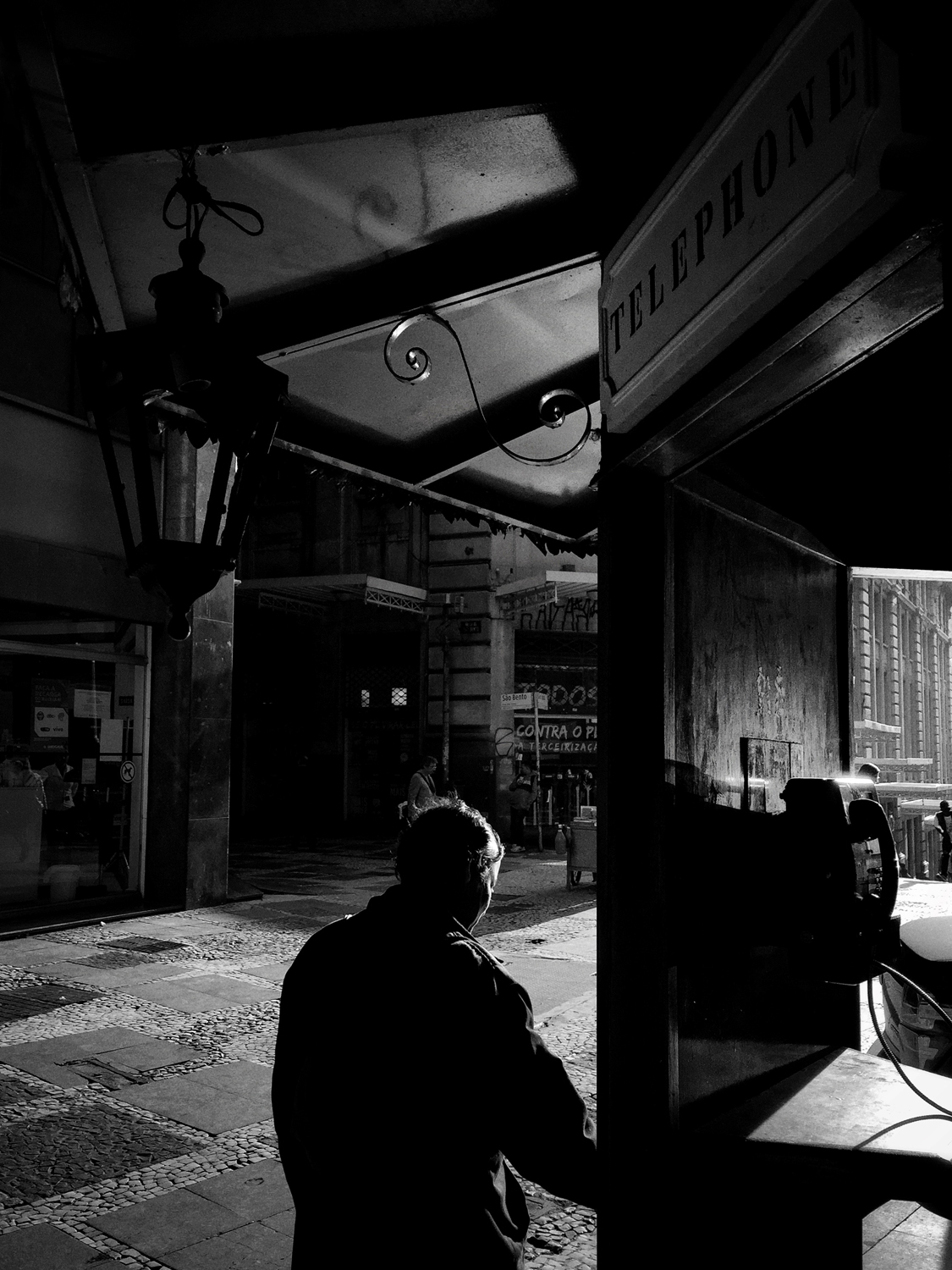
She enters a small store and leaves with the bag. She wanders through the streets until we arrive at the site of the city’s foundation. I remember that before the Society of Jesus, this place was a cemetery for many indigenous tribes. They met here to bury their dead and to negotiate. Death and contracts seems to be always hand in hand in a twisted way.
The Imortal Glory stands tall, on the top of the stone column, as a guide for the lost. I write the time and place in my notepad and take one last shot as the woman walks to the bus stop.

Then I leave her, hearing the whispers of my own demons feeding on my thoughts. I debate again about my options here.
There are certain rules I promised to never break again – which doesn’t means it won’t happen. There are things much stronger than promises in this world.
This city is a spawn of such things. So is this job.

From all the stories about São Paulo, there’s one that seems like a prophecy for the dwellers of these dirty streets. An omen I constantly see between the lines in every case, like a signature of Fate, although few know about it.

There was a Portuguese pirate living on the coast, about 40 miles from where the Jesuits would settle. He was the most merciless Indian hunter at the time, killing most of the men and enslaving the women for his pleasure. But things suddenly changed.
History tells he was not only converted by the priests — joining their mission — but became a feverish believer and preacher among the native Indians. One day, when the Society of Jesus decided it was about time to expand their influence, it was the former pirate who picked the shortest straw.
He left towards the unknown landscapes beyond the Society’s settlement and crossed paths with warriors from a local tribe. And you can guess what happened next. A rain of arrows left him bleeding to death under the blazing sun.
One of the Jesuits later wrote in his letters that “the Lord would establish His Church, now that He had bathed the foundations with so glorious blood”.
A city founded by religious missionaries, with a promise of Heaven, consecrated by the murder and the blood of a former pirate.
This job has taught me that promises of light are bound to hard shadows. All the contracts signed with Fate have secret dark pages we can never read.
I feel a lot like this city.
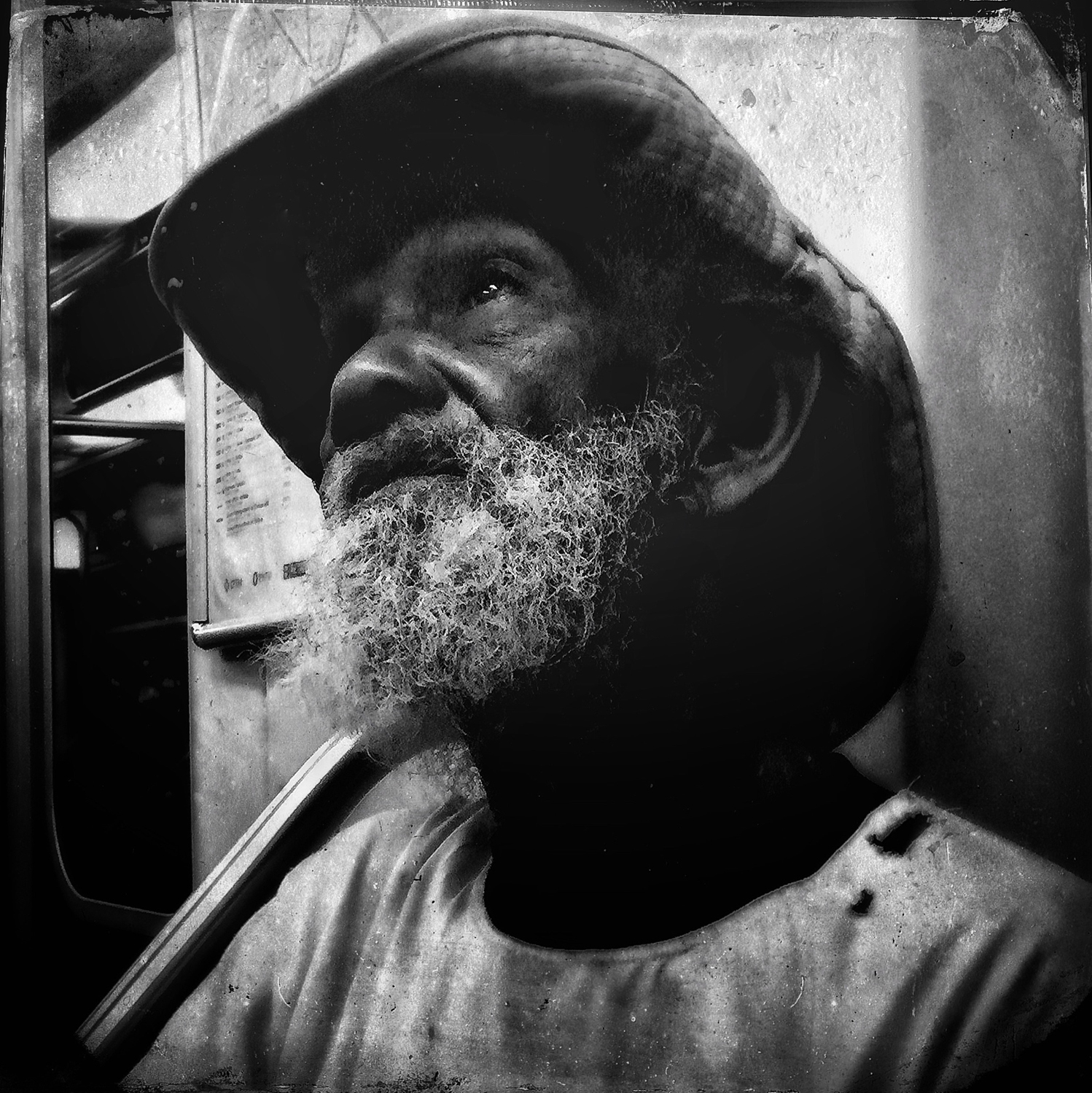
The phone rings on my way back to the office. I see the client’s name on the screen and I ignore the call, but I know he will be waiting for me. Moths and lamps.
I keep walking aimlessly for a while collecting faces and silhouettes. The man lights the cigarette but seems like confessing on the sidewalk. Another man sees when I point the camera at him and leaves with a suspicious look. For a brief moment I almost can understand what I’m looking for. What is the purpose of this, what’s the story I’m living in.


When I meet my client, I show him everything I’ve got. I explain the case using the words as knives, twisting the blades a little more on each sentence.
I take no pleasure doing this, don’t get me wrong. I’m another kind of monster.
The job had taught me that such pain is the closure the clients seek — and I’m good at the the job.
He pays me and disappears behind the door. I hope I never meet him again.
Looking through the window I see the sun vanishing behind the buildings. The last rays of light ignite the polluted air on the horizon with the most beautiful red and orange tones. People cast long shadows down there on the streets.
I close the curtain and shut off the phone as the day slowly ends. In less than an hour there will be just shadows — the city’s true calling.
I open the bottle of bourbon and wait for the night and its truths, relieved by the distance from the promises of the day.
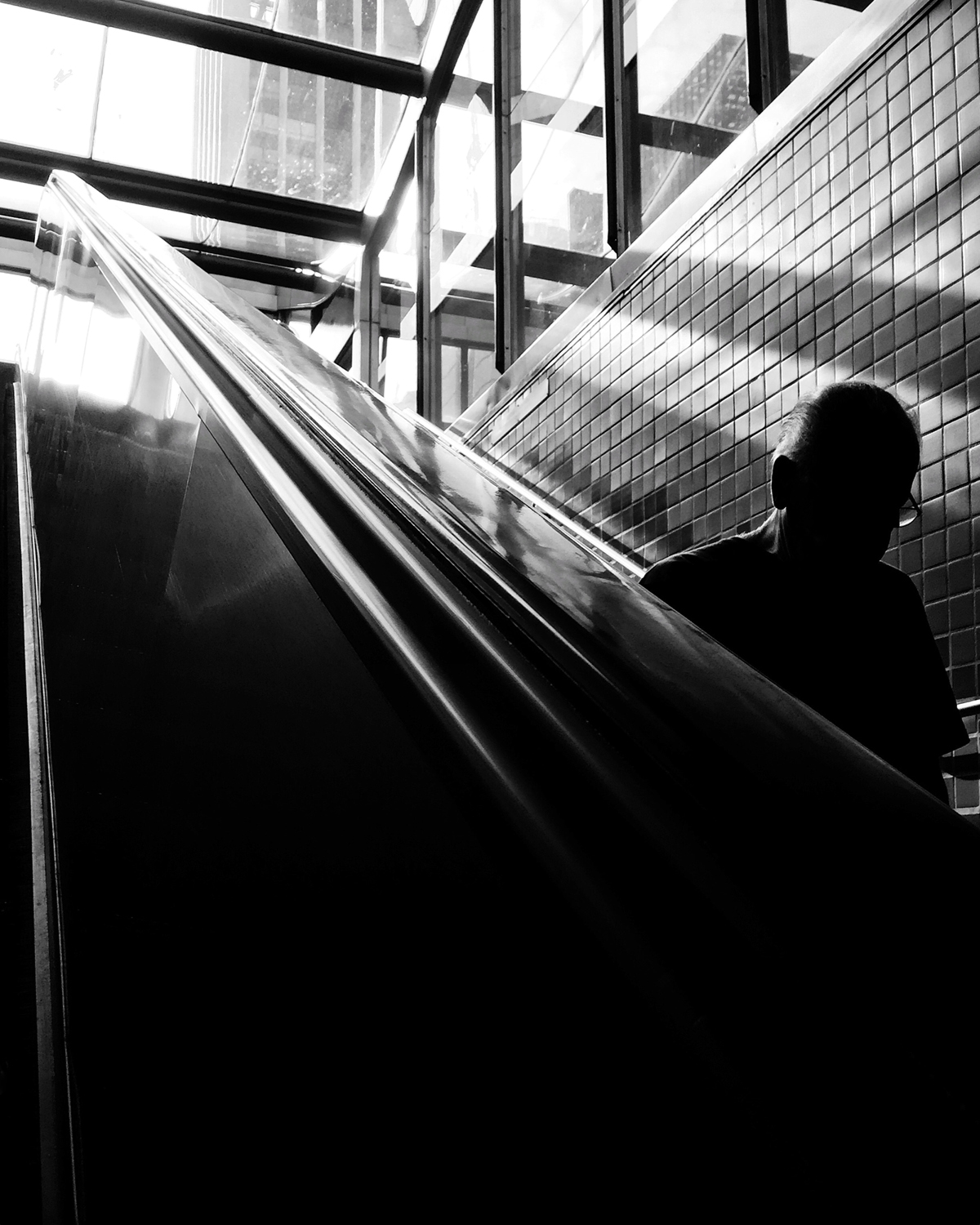
THE END
Leandro Leme is a photographic artist from São Paulo, Brazil. More of his work can be seen on Instagram | 14&15 Mobile Photographers.

by Antonia Baedt | Jan 20, 2017 | Antonia Baedt, Stories, Storyteller, You Are Grryo
I am a storyteller by profession. Most of my inspiration comes from everyday life. I believe our lives are made of a never-ending string of stories that connect us all to one another – if we are just willing to listen. By sharing pictures on Instagram, I feel like I am offering something in return to people who share their stories with me. Through their pictures, I can walk along an Australian beach, sit on a rooftop in New York City, dip my toe into the icy waters of Canadian lakes or sit in a cozy café in Warsaw.
11 months ago, I created an Instagram account as a task assigned to me by my employer. I never saw the point of social media, where most people seemed to connect digitally to people they knew in real life. But Instagram has turned out to be a window to the world. My Instagram feed is a collection of ideas, coincidences and random things, that catch my eye during everyday life. I am not a photographer and I don’t have a theme or style to my account.

Finding beauty in ordinary things is what inspires me most.
About half of my pictures are very spontaneous. I often stop during the day to take a photo with my mobile phone. This was one of those crappy days at the office. Nothing had gone according plan and I left a lot later than I had hoped to. Carrying a pile of paperwork, my bags, and the trash, I walked over to my car, just wanting to get home. The bright yellow caught my eye. After a moment’s thought I disposed of the trash, threw my stuff in the car and spend the next 15 minutes bent over the stairs with my phone. Strange stares by passersby ensued. The next day the leaves were gone. Someone had “cleaned” them up.

The Mummelsee in the German Black Forest area engulfed in fog.
Besides everyday hidden beauty, bad weather has become a welcome photo opportunity. This picture of the lake is the outcome of a business trip. I was supposed to bring back picturesque photos of a popular tourist area. Well, as you can probably guess by this picture, that was a complete disaster. It rained for 3 days straight. I fell in love with the dreamy mood of the thick forest all engulfed in fog. Now, I go out hunting for fog and rain on purpose.

Chasing fog during a visit in die Central German Uplands, where I grew up.

Creating and learning as I go is one of the gifts IG has given me.
Not all my pictures are things I find along the way. The other half of what I post is planned. Copying artists that inspire me is my way of learning. I don’t necessarily aim for an identical picture, but I like the reverse engineering part of it. Everyone who spends some time on Instagram will spot some patterns of what is popular. Lamps, candles and fairy lights are a current trend. I thought: you can’t judge something you haven’t tried. So, I went on a photo walk with a fellow Iger, all set up with lamps and fairy lights. We realized quickly that taking an atmospheric picture like this is much harder than it looks.

After living in Cologne for many years, I am discovering it all over again.
A fellow Instagrammer has a similar picture of the church in his gallery. It was taken in the city I live in. I was so fascinated by the angle, that I started looking for the position he must have taken it from. A fun way to explore places you pass by every day.

Sometimes I have to wait a while for the perfect opportunity to take a picture I have had in mind for a long time.
Pictures rarely turn out exactly the way I intended. If they do, they take a lot of planning. As with my experiments, I constantly look for locations and great light. The tracking of weather, seasonal changes and the movement of the sun have become part of my every day routine. Because I don’t have a lot of time to take pictures, I use that info for the occasional quick hunt – by leaving an hour early for work to stop along the way, for example.

Connecting with people all over the world and making new friends is what makes Instagram so special.
Last but not least, my new-found Instagram friends are a wonderful way of creating new pictures. I am lucky to have met a few in real life. It is amazing to see how different the pictures are that you each took of the same things. I have learned a lot about photography and how different Instagrammers see the world around them.

“The frozen tree”
I often get up before sunrise to chase for that magical light only the rising sun can give you. This picture was taken on a Saturday morning. It was freezing cold. The morning fog had just lifted and everything was covered in ice. Billions of tiny crystals reflecting the harsh sunlight. If I can’t go with a fellow Iger, I like to go alone. I can walk and stop at my own pace and just enjoy the silence of a fresh day. This time I had a few of my IG friends with me. We connected via a group chat app and were each out hunting for the perfect picture that morning. All in different countries but all looking into the same rising sun.My photos are snapshots of my life’s stories and my way of bringing my visual ideas onto paper, so-to-say. As a storyteller in the movie industry I think in pictures every day and connecting stories to them comes very naturally. But I am not a photographer for photography’s sake. I take photos to have something to share on Instagram. Something I like and something I hope a few people can connect to, so that the strings of their stories and mine can intertwine.

by L. Bird | Jan 13, 2017 | Ladybird, Stories, You Are Grryo
Paris, late at night last September, tangueros are dancing on the plaza of Opera Garnier. It takes a second to stop. Then, time flies. Tango, the dance of love captured me, again… While I was taking photographs, an idea emerged. If reasons of Love resist to any understanding, would it be possible to identify the signs of its discourse as steps of dancers always appear to me – like a vibrant illustration of this intimate dialogue between lovers?

How is it possible to apprehend what love is? The mechanisms of love are a mystery… Raymond Carver, a fabulous American short stories teller wrote ‘What We Talk When We Talk About Love.’ With such a title, he might have found the best angle to approach what love is. Not love itself but what is involved in love… Also, Roland Barthes, a French philosopher tried in ‘Fragments d’un discours amoureux’ to analyse the language of love, elaborating, a kind of analytical board of its various figures as Dmitri Mendeleïev classified the chemical elements… According to Barthes, the discourse of love is highly ‘choreographic’ and he compares them to movements of dancers. Analyzing this discourse, he called the logic of the reason and applied it to the things of heart. It seems to be a seductive way to find some kind of answers to this mystery. ‘Tangueros’ series tries to take its part in that wondering quest.
…
Tango is easy to be seduced by. The body language of this dance and its music are certainly very powerful, even if it would be easy to confess this is a personal belief coming from its practice… The colors of Tango are black and red, and nobody ignores that red roses have thorns too. Each step of this dance could be the last one. It is a dialogue converging to a climax. Even if one of the dancers is supposed to have the lead in this conversation, any of the dancers is free to stop its course for a moment, introducing a new step to this sparring verbal. That’s how the dance occurs. In that way, Tango steps are really close to the figures Barthes identified. Re-reading ‘Fragments d’un discours amoureux’ while editing the photographs of this series was like growing evidence… This series of steps was like some of the loved ones.
…

* This shy distance of the very first steps when dancing is not already in question.

* This precarious balance after, what is not yet a couple, starts dancing. Dancers need these steps to know each other.

* The mistaken steps, and how the dancers need to adjust their movements when in doubt about the meaning of dancing together, are still in the air.

* This impossible try to let it die, inspired by this primitive fear of being hurt. How thrilled it is to hold on to, despite of it. How sweet it is too, to quiet each other in this need of trying, at least, just trying.
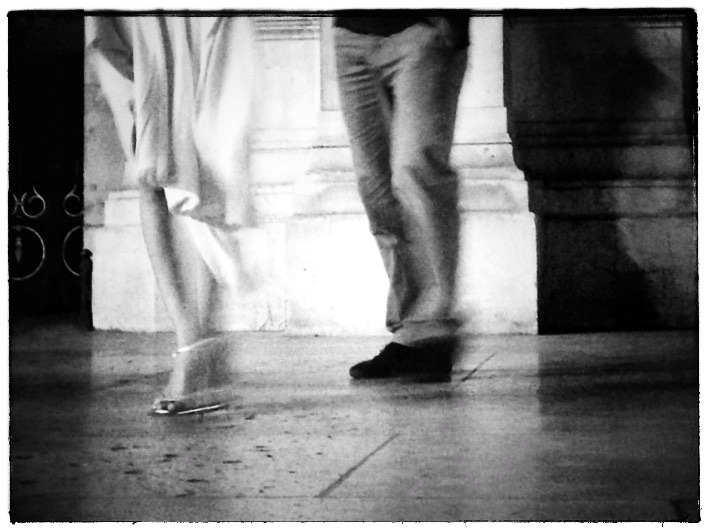
* The very first dancing steps. They are not perfect but something is happening and it’s already taking both of them beyond words.

* How this new grammar of steps provides the energy to give and ask for more that they might think at the very first sight. Sensations don’t allow them to think any more – steps are coming from something deeper.

* The need to take a break, just like birds on a wire. It goes too fast and finding breath to articulate is difficult. Suddenly, fear and blossom of dancing are intimately melted.

* These moments of grace where feelings can only be expressed with free movements, just like an air of bandoneon. Imagination took its part in this earned and sublimed trust, coming from previous steps.

* There is a belief in this balance which seems perfect. One move and the other is able to finish the sequenced steps the first dancer suggested. Intimacy is pushed to its limits in what seems a perfect match: bodies are vibrating, hearts are beating strongly and minds are filled with pure sensation. For the time of a dance, bodies and souls are extended to a kind of eternity as if this moment had to last for ever.

…
Steps and signs. Step by step, a grammar of these signs is enlightened: its subjects, its objects, its sequenced sentences, its rhythms, its breaths and its poetry. Unless what it is about remained a whole mystery. Photography captures moments; images are like signs of living love, living lives. Photography is itself a grammar helping us to approach deepest mysteries as close as we can. As a photographer, it is a never ending dance…
L. Bird, Paris, December 2016.
L. Bird is an independent photographer and film maker based in Paris [France]. Her work is all about storytelling, whatever it concerns [whether photography, series or short-movies]. Her work’s aesthetic is mainly inspired by street and documentary photography, but in such a manner, that it always turns her images into contemporary tales…
You can find her on : Instagram | Website



























































































































































